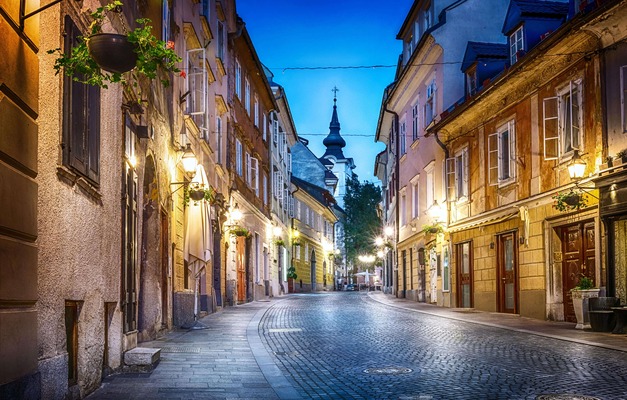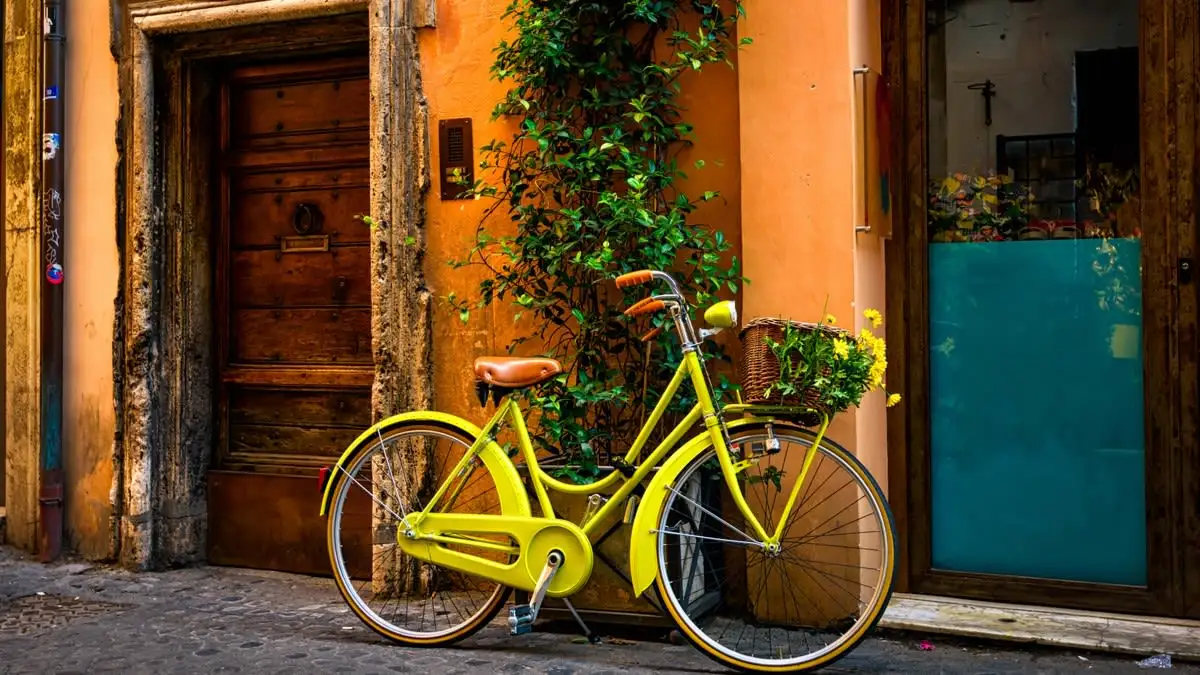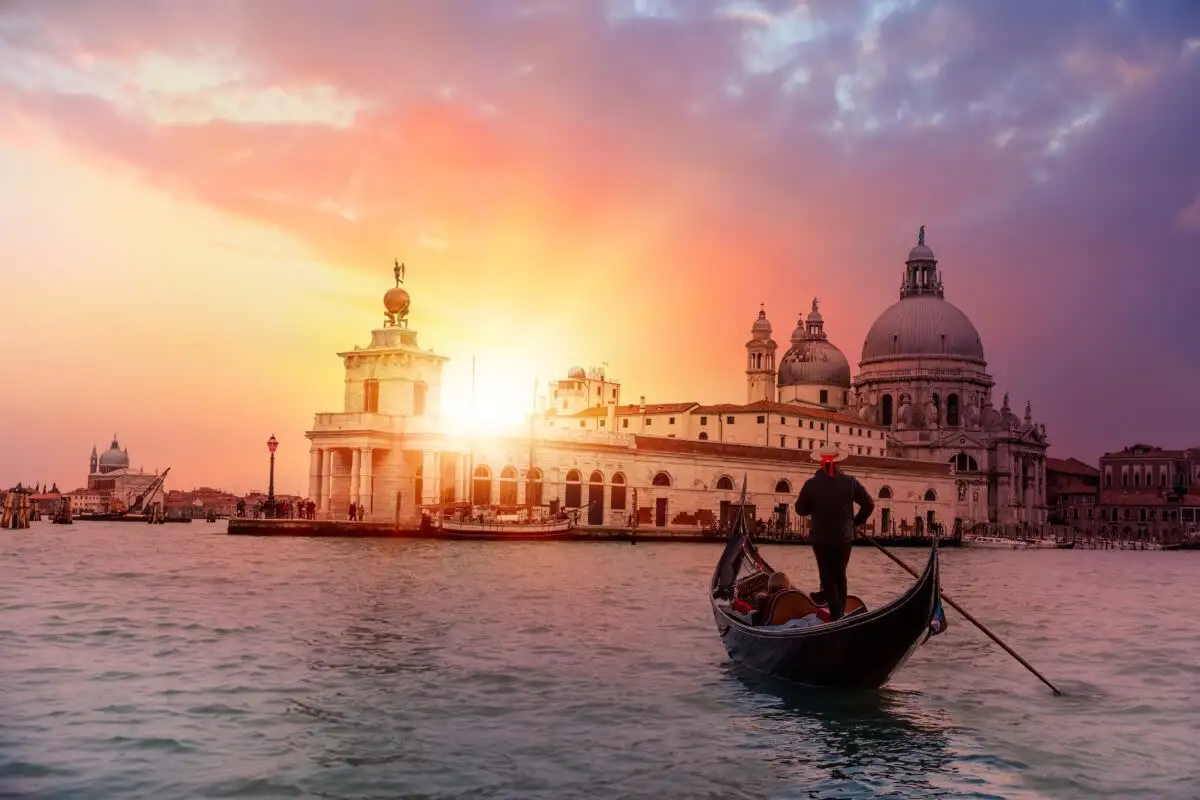
A 12-Day Prague, Vienna, Budapest, and Bratislava Itinerary
 12 Day Tour of Prague, Vienna, Bratislava and Budapest
12 Day Tour of Prague, Vienna, Bratislava and Budapest
Overview
Trip Map
Itinerary
Inclusions
Reviews







12 Days 11 Nights
Best Time: Jan-Dec
Castle & Palace Tours
History Buffs
Journey through the heart of Central Europe, where imperial splendor and romantic vistas await. This adventure, steeped in the grandeur of the Austro-Hungarian Empire, takes you from Prague's medieval charm to Vienna's imperial opulence, and from the quaint allure of Bratislava to Budapest's Danube beauty. Enjoy private guided tours that reveal local secrets, providing an intimate experience in each city. With private airport pickups and comprehensive travel guidance provided, your trip combines the allure of majestic castles, thermal baths, and trendy shopping streets with the ease and comfort of well-planned logistics.
- Enjoy breathtaking views from the Charles Bridge in Prague's Malá Strana
- Wander the exhibits of Vienna's Hofburg Palace, feeling the echoes of an imperial past
- Soak in the soothing waters of Budapest's famous thermal Széchenyi baths
- Cross the iconic Széchenyi Chain Bridge and visit the massive Dohány Street Synagogue
- Marvel at the beauty of the Matthias Church in Budapest's Castle Hill
Journey through the heart of Central Europe, where imperial splendor and romantic vistas await. This adventure, steeped in the grandeur of the Austro-Hungarian Empire, takes you from Prague's medieval charm to Vienna's imperial opulence, and from the quaint allure of Bratislava to Budapest's Danube beauty. Enjoy private guided tours that reveal local secrets, providing an intimate experience in each city. With private airport pickups and comprehensive travel guidance provided, your trip combines the allure of majestic castles, thermal baths, and trendy shopping streets with the ease and comfort of well-planned logistics.
- Enjoy breathtaking views from the Charles Bridge in Prague's Malá Strana
- Wander the exhibits of Vienna's Hofburg Palace, feeling the echoes of an imperial past
- Soak in the soothing waters of Budapest's famous thermal Széchenyi baths
- Cross the iconic Széchenyi Chain Bridge and visit the massive Dohány Street Synagogue
- Marvel at the beauty of the Matthias Church in Budapest's Castle Hill

Prague Castle
Castles & Chateaux

Schönbrunn Palace & Zoo
Parks & Gardens

Spanish Riding School
Cultural

Bratislava Castle
Castles & Chateaux

Central Market
Street Markets

Castle Hill
Castles & Chateaux
Must see sights

Prague Castle
Castles & Chateaux

Schönbrunn Palace & Zoo
Parks & Gardens

Spanish Riding School
Cultural

Bratislava Castle
Castles & Chateaux

Central Market
Street Markets

Castle Hill
Castles & Chateaux
Starting from
$2200
per person
 Not included
Not included Secure Your Customizable Trip
Enter your details to embark on a journey that can be tailored just for you.
Start
Travelers
0 travelers
Add Room
Remove Room
Preferred Hotel Stars
Select Hotel Stars
Craft Your Own Itinerary
Select your interests and destinations for a trip plan inspired by you.
Crowns & Castles of Central Europe Trip - Map & Itinerary
Enable/Disable Map Scrolling
Click To Make Map Interactive

Crowns & Castles of Central Europe Trip Timeline
 Edit Details
Edit DetailsArrival
3 nights
Prague
Czech Republic
Train: 4.5h
3 nights
Vienna
Austria
Train: 1.5h
2 nights
Bratislava
Slovakia
Train: 2.5h
3 nights
Budapest
Hungary
Departure
Day-By-Day Itinerary of Crowns & Castles of Central Europe Trip
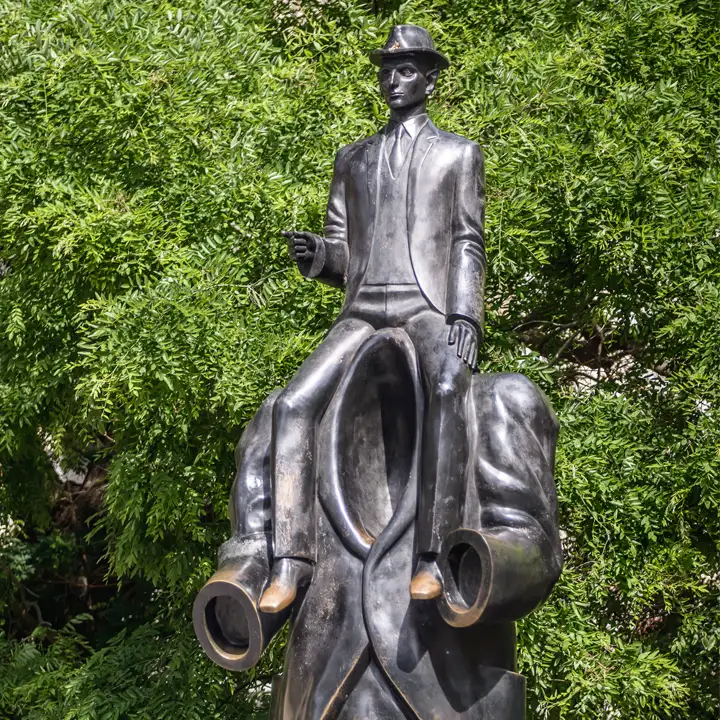
Day 1
Arrive Prague
Day 1
Arrive Prague




To Be Determined
Airport Transfer
Prague has one main airport, Václav Havel Airport Prague, where almost all visitors arrive. Taxis are available directly at the terminal exit, or you can arrange a private transfer for added convenience.

Day 1
Arrive Prague


Day 1
Arrive Prague





To Be Determined:
Airport Transfer
Mid-Day/Afternoon:
Jewish Quarter
Late Afternoon/Early Evening:
New Town
Early Evening/Evening:
Evening Boat Cruise

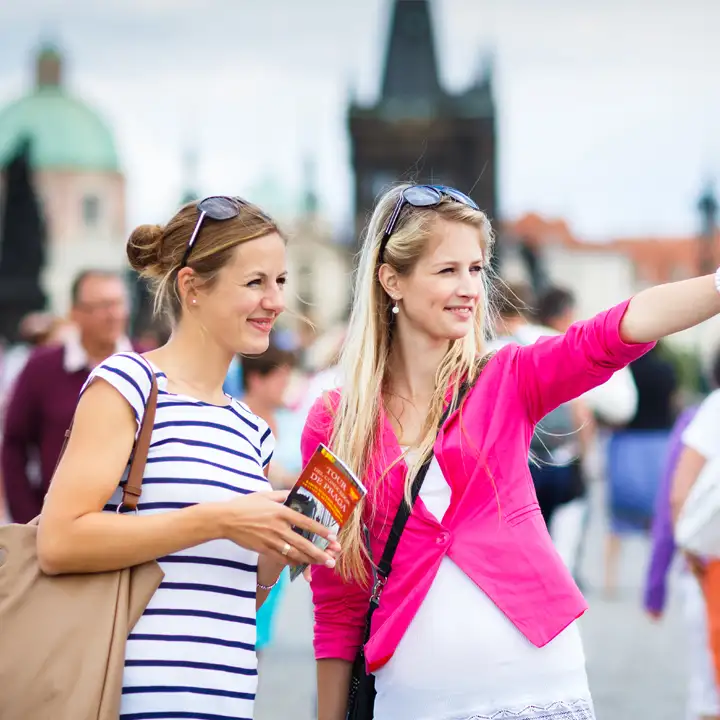
Day 2
Prague
Day 2
Prague



9:00 AM - 12:30 PM
Royal Route Guided Tour
On this charming guided walk, you will explore the Prague Castle, the largest castle complex in all of Europe. To reach the castle you will trace the Royal Coronation Route and cross the Charles Bridge, whose “speaking stones” reveal the amazing and often cruel history that occurred there. Your tour guide will then take you either through the castle courtyards and into the dramatic St. Vitus Cathedral in the center of the castle complex, or through the upper part of the castle district around the oversized palaces of the old Catholic nobility and the top of the Castle Steps for incomparable views over the red rooftops of the Little Quarter.

Charles Bridge
Cross the river dividing Prague's most historic neighborhoods, and experience one of Europe's most iconic landmarks.
Show More
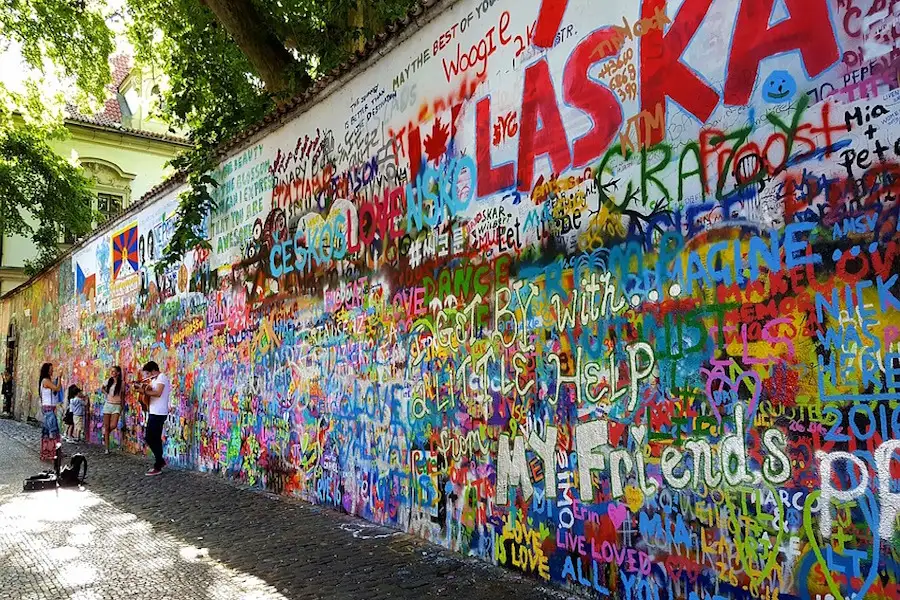
Maltese Square & Lennon Wall
See a historic wall that has been covered in John Lennon-inspired graffiti since Communist days.
Show More

Prague Castle
Prague Castle is one of the main attractions in Prague and is also the largest castle complex in the world.
Show More

Charles Bridge
Cross the river dividing Prague's most historic neighborhoods, and experience one of Europe's most iconic landmarks.
Show More

Maltese Square & Lennon Wall
See a historic wall that has been covered in John Lennon-inspired graffiti since Communist days.
Show More

Prague Castle
Prague Castle is one of the main attractions in Prague and is also the largest castle complex in the world.
Show More

Charles Bridge
Cross the river dividing Prague's most historic neighborhoods, and experience one of Europe's most iconic landmarks.
Show More
prev
next

Day 2
Prague

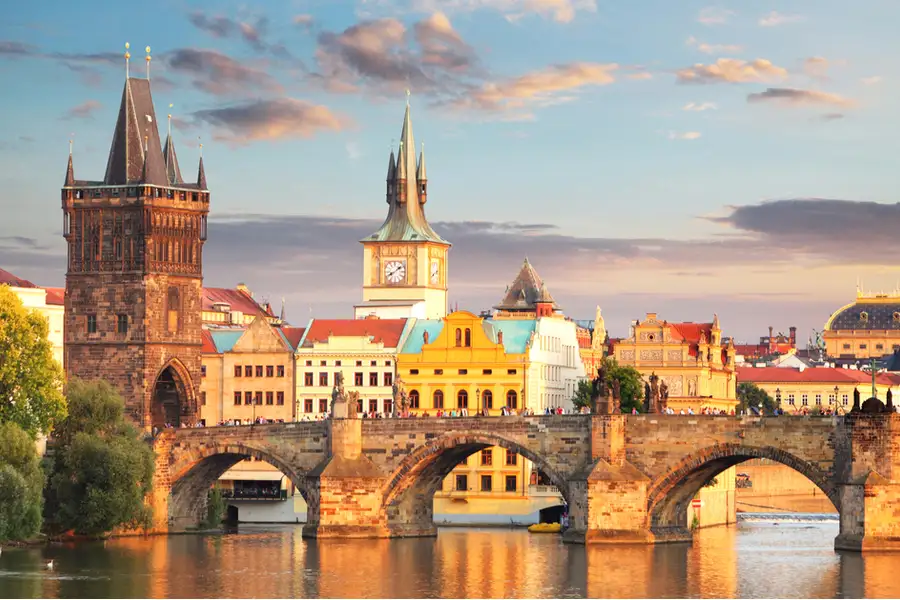
Charles Bridge
 Highlight of Royal Route Guided Tour
Highlight of Royal Route Guided TourCross the river dividing Prague's most historic neighborhoods, and experience one of Europe's most iconic landmarks.
Bridge construction began in 1357 under King Charles IV (hence the name), and it was the only bridge across the Vltava River until 1841. 30 baroque statues of saints line the bridge, and it is filled with street artists and entertainers. Not to be missed.

Maltese Square & Lennon Wall
 Highlight of Royal Route Guided Tour
Highlight of Royal Route Guided TourSee a historic wall that has been covered in John Lennon-inspired graffiti since Communist days.
The wall has been covered in graffiti since the 1960s, and during Communism anti-regime sentiment was common. John Lennon's assassination inspired grafitti reflecting his song, Imagine, which earned the wall its current moniker. It is now a favorite gathering place for tourists, and musicians sometimes congregate there as well. Just around the corner is the Maltese Square, which is one of Prague's more quaint and relaxed public spaces, despite being just off the main tourist route.
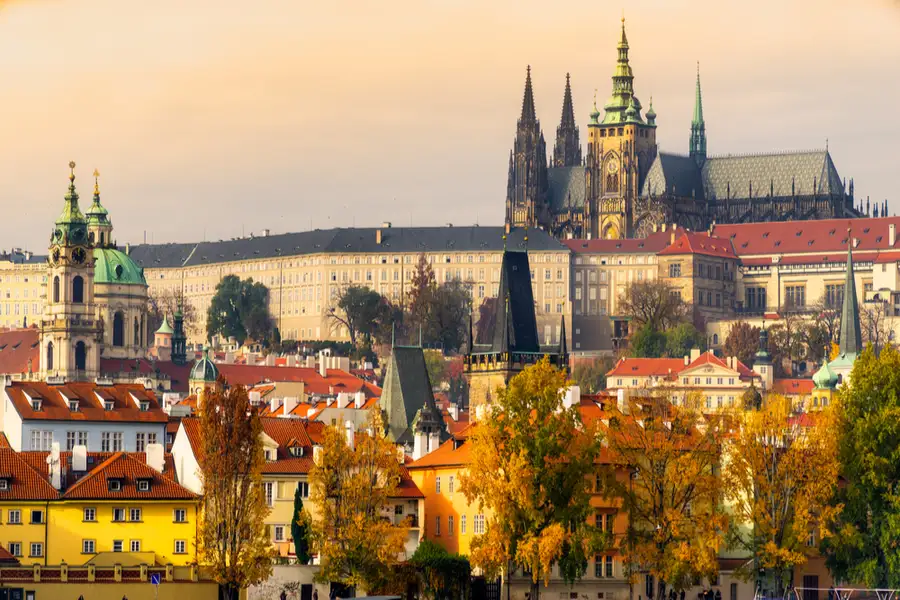
Prague Castle
 Highlight of Royal Route Guided Tour
Highlight of Royal Route Guided TourPrague Castle is one of the main attractions in Prague and is also the largest castle complex in the world.
The Prague Castle is the largest castle complex in the world with structures dating back to the 9th century. The St Vitus Cathedral and Basilica of St George can be found within the castle walls. The Prague Castle also includes several gardens, palaces, and a monastery. This castle was the seat of power for the Kings of Bohemia, Holy Roman Emperors, and presidents of former Czechoslovakia. Prague Castle is a UNESCO world heritage site and is one of the most visited places in the country.

Charles Bridge
 Highlight of Royal Route Guided Tour
Highlight of Royal Route Guided TourCross the river dividing Prague's most historic neighborhoods, and experience one of Europe's most iconic landmarks.
Bridge construction began in 1357 under King Charles IV (hence the name), and it was the only bridge across the Vltava River until 1841. 30 baroque statues of saints line the bridge, and it is filled with street artists and entertainers. Not to be missed.

Maltese Square & Lennon Wall
 Highlight of Royal Route Guided Tour
Highlight of Royal Route Guided TourSee a historic wall that has been covered in John Lennon-inspired graffiti since Communist days.
The wall has been covered in graffiti since the 1960s, and during Communism anti-regime sentiment was common. John Lennon's assassination inspired grafitti reflecting his song, Imagine, which earned the wall its current moniker. It is now a favorite gathering place for tourists, and musicians sometimes congregate there as well. Just around the corner is the Maltese Square, which is one of Prague's more quaint and relaxed public spaces, despite being just off the main tourist route.

Prague Castle
 Highlight of Royal Route Guided Tour
Highlight of Royal Route Guided TourPrague Castle is one of the main attractions in Prague and is also the largest castle complex in the world.
The Prague Castle is the largest castle complex in the world with structures dating back to the 9th century. The St Vitus Cathedral and Basilica of St George can be found within the castle walls. The Prague Castle also includes several gardens, palaces, and a monastery. This castle was the seat of power for the Kings of Bohemia, Holy Roman Emperors, and presidents of former Czechoslovakia. Prague Castle is a UNESCO world heritage site and is one of the most visited places in the country.

Charles Bridge
 Highlight of Royal Route Guided Tour
Highlight of Royal Route Guided TourCross the river dividing Prague's most historic neighborhoods, and experience one of Europe's most iconic landmarks.
Bridge construction began in 1357 under King Charles IV (hence the name), and it was the only bridge across the Vltava River until 1841. 30 baroque statues of saints line the bridge, and it is filled with street artists and entertainers. Not to be missed.
prev
next

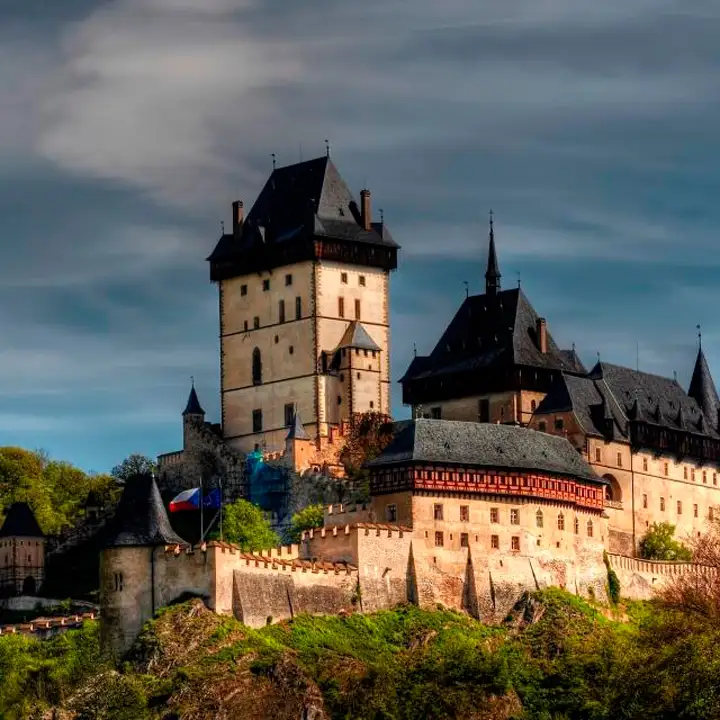
Day 3
Prague
Day 3
Prague



Morning to Afternoon
Karlštejn Castle
Karlštejn, i.e. Charles' Stone Castle, is the most famous castle in the Czech Republic. The fairy-tale perfect castle was founded by King Charles IV in 1348 to guard his royal treasures. It's massive towers and walls are spread out over a series of rocky peaks above the Berounka River and commands striking views of the surrounding hills.
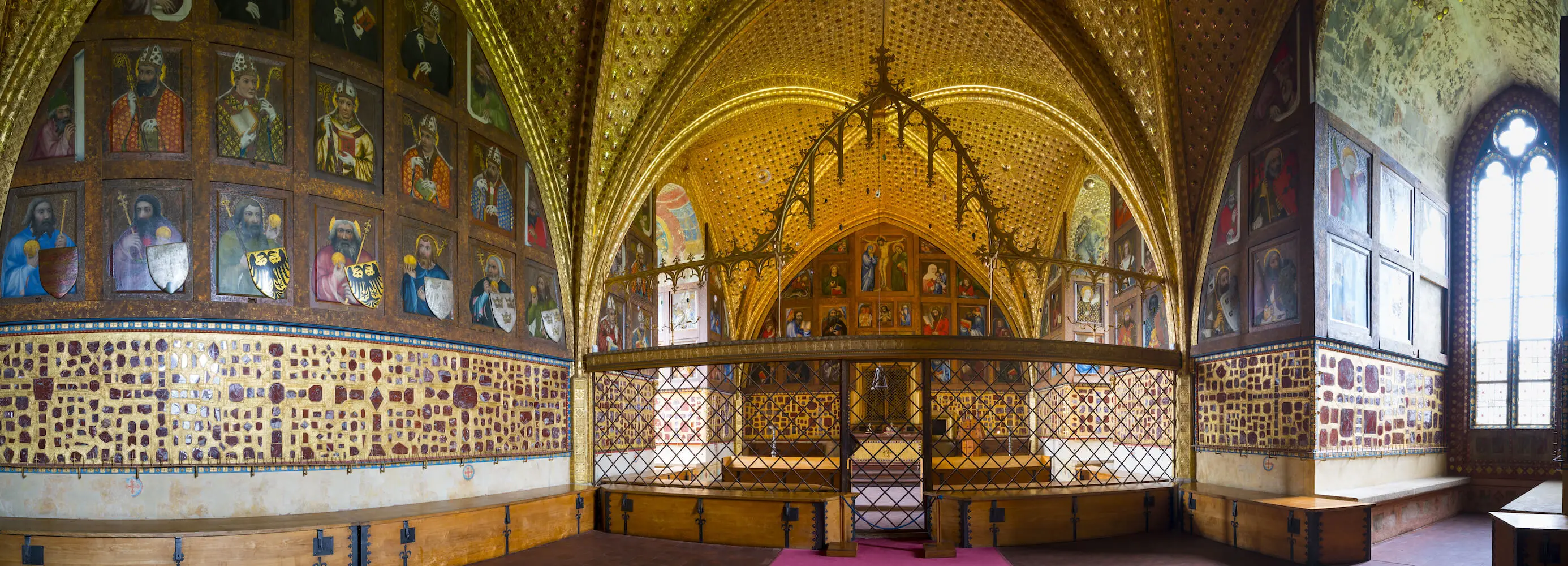
Chapel of the Holy Rood
Tour a closely-guarded and jewel-encrusted chapel decorated with amazing medieval art.
Show More

Chapel of the Holy Rood
Tour a closely-guarded and jewel-encrusted chapel decorated with amazing medieval art.
Show More

Chapel of the Holy Rood
Tour a closely-guarded and jewel-encrusted chapel decorated with amazing medieval art.
Show More

Chapel of the Holy Rood
Tour a closely-guarded and jewel-encrusted chapel decorated with amazing medieval art.
Show More

Chapel of the Holy Rood
Tour a closely-guarded and jewel-encrusted chapel decorated with amazing medieval art.
Show More
prev
next

Day 3
Prague


Chapel of the Holy Rood
 Highlight of Karlštejn Castle
Highlight of Karlštejn CastleTour a closely-guarded and jewel-encrusted chapel decorated with amazing medieval art.
The most important and impressive part of the castle, the Chapel of the Holy Rood, is open only to special guided tours due to the fact that its walls are literally covered in precious jewels.

Chapel of the Holy Rood
 Highlight of Karlštejn Castle
Highlight of Karlštejn CastleTour a closely-guarded and jewel-encrusted chapel decorated with amazing medieval art.
The most important and impressive part of the castle, the Chapel of the Holy Rood, is open only to special guided tours due to the fact that its walls are literally covered in precious jewels.

Chapel of the Holy Rood
 Highlight of Karlštejn Castle
Highlight of Karlštejn CastleTour a closely-guarded and jewel-encrusted chapel decorated with amazing medieval art.
The most important and impressive part of the castle, the Chapel of the Holy Rood, is open only to special guided tours due to the fact that its walls are literally covered in precious jewels.

Chapel of the Holy Rood
 Highlight of Karlštejn Castle
Highlight of Karlštejn CastleTour a closely-guarded and jewel-encrusted chapel decorated with amazing medieval art.
The most important and impressive part of the castle, the Chapel of the Holy Rood, is open only to special guided tours due to the fact that its walls are literally covered in precious jewels.

Chapel of the Holy Rood
 Highlight of Karlštejn Castle
Highlight of Karlštejn CastleTour a closely-guarded and jewel-encrusted chapel decorated with amazing medieval art.
The most important and impressive part of the castle, the Chapel of the Holy Rood, is open only to special guided tours due to the fact that its walls are literally covered in precious jewels.
prev
next

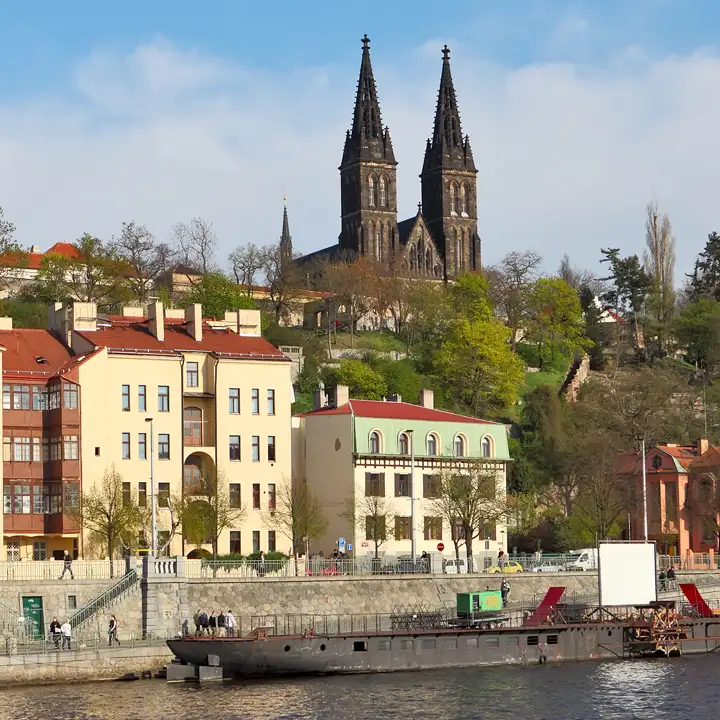
Day 4
Prague to Vienna
Day 4
Prague to Vienna





Morning/Mid-Day
Vyšehrad Fortress
The castle of Vyšehrad was the seat of Bohemia's kings from the 11th to the 12th centuries. Due to its strategic position on a hill overlooking the Vltava River and Prague, it became an important army garrison in the 17th century, and it was transformed into a fortress with huge walls, gates, and ramparts. Walking along these ramparts will offer you wonderful views of the city and river. The interior of the fortress is now given over to a pleasant and quiet park which is a favorite of locals.
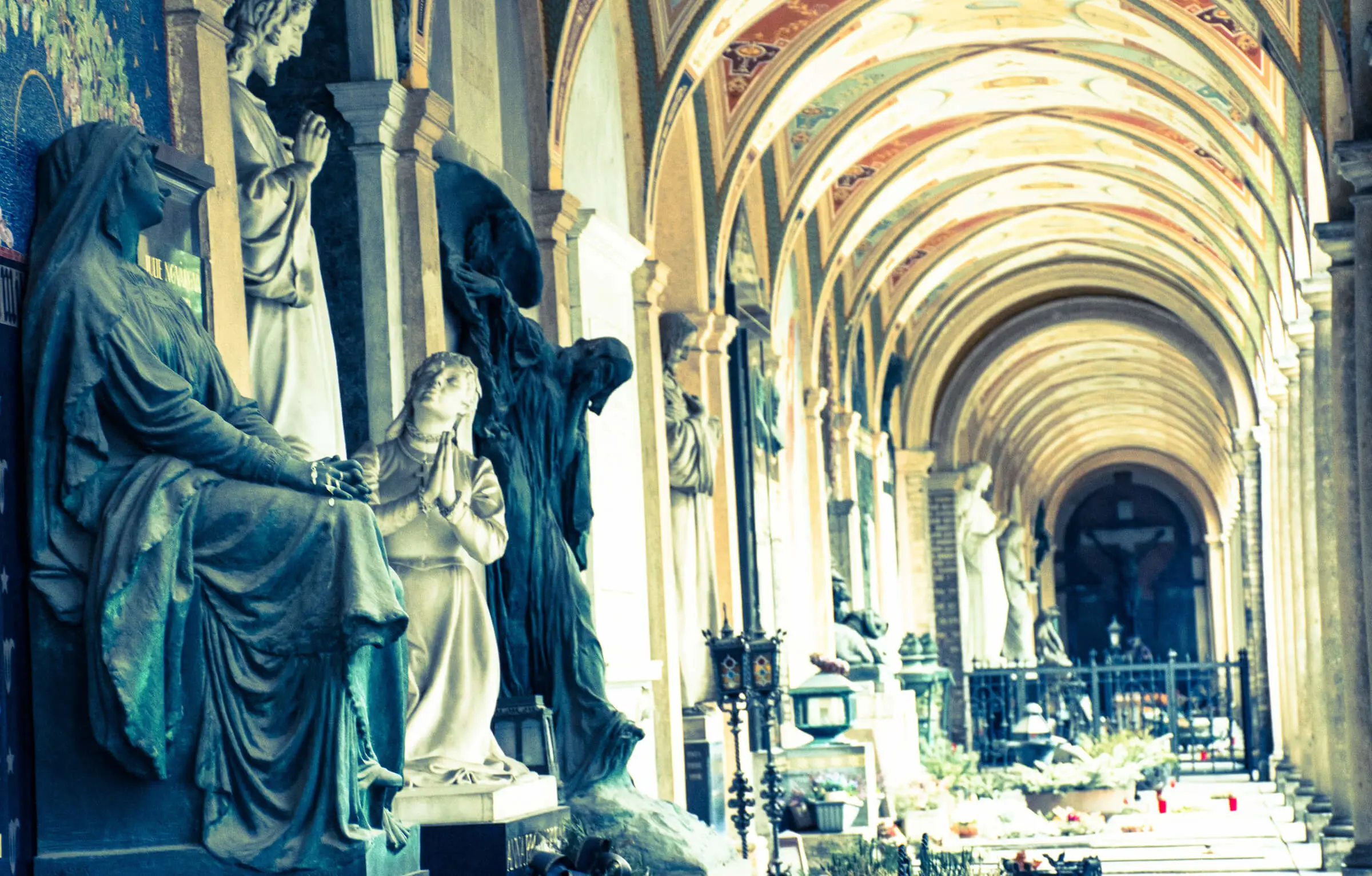
Vyšehrad Cemetery
Wander in a graveyard where many prominent Czechs are buried, such as famed composers Dvořák & Smětana.
Show More

Fortress Walls Viewpoint
Enjoy stunning city views from atop the fortress walls.
Show More

Brick Gate and Casemates
Venture within the fortress's massive 17th-century walls and gates.
Show More

Vyšehrad Cemetery
Wander in a graveyard where many prominent Czechs are buried, such as famed composers Dvořák & Smětana.
Show More

Fortress Walls Viewpoint
Enjoy stunning city views from atop the fortress walls.
Show More

Brick Gate and Casemates
Venture within the fortress's massive 17th-century walls and gates.
Show More

Vyšehrad Cemetery
Wander in a graveyard where many prominent Czechs are buried, such as famed composers Dvořák & Smětana.
Show More
prev
next

Day 4
Prague to Vienna


Vyšehrad Cemetery
 Highlight of Vyšehrad Fortress
Highlight of Vyšehrad FortressWander in a graveyard where many prominent Czechs are buried, such as famed composers Dvořák & Smětana.
The cemetery is filled with many tombs which are works of art in themselves, including several arcades with beautiful art-nouveau frescoes. The monumental Slavin tomb is a sort of pantheon of the Czech people, with over 55 prominent persons buried within it. Dvořák and Smětana have their own more modest graves.
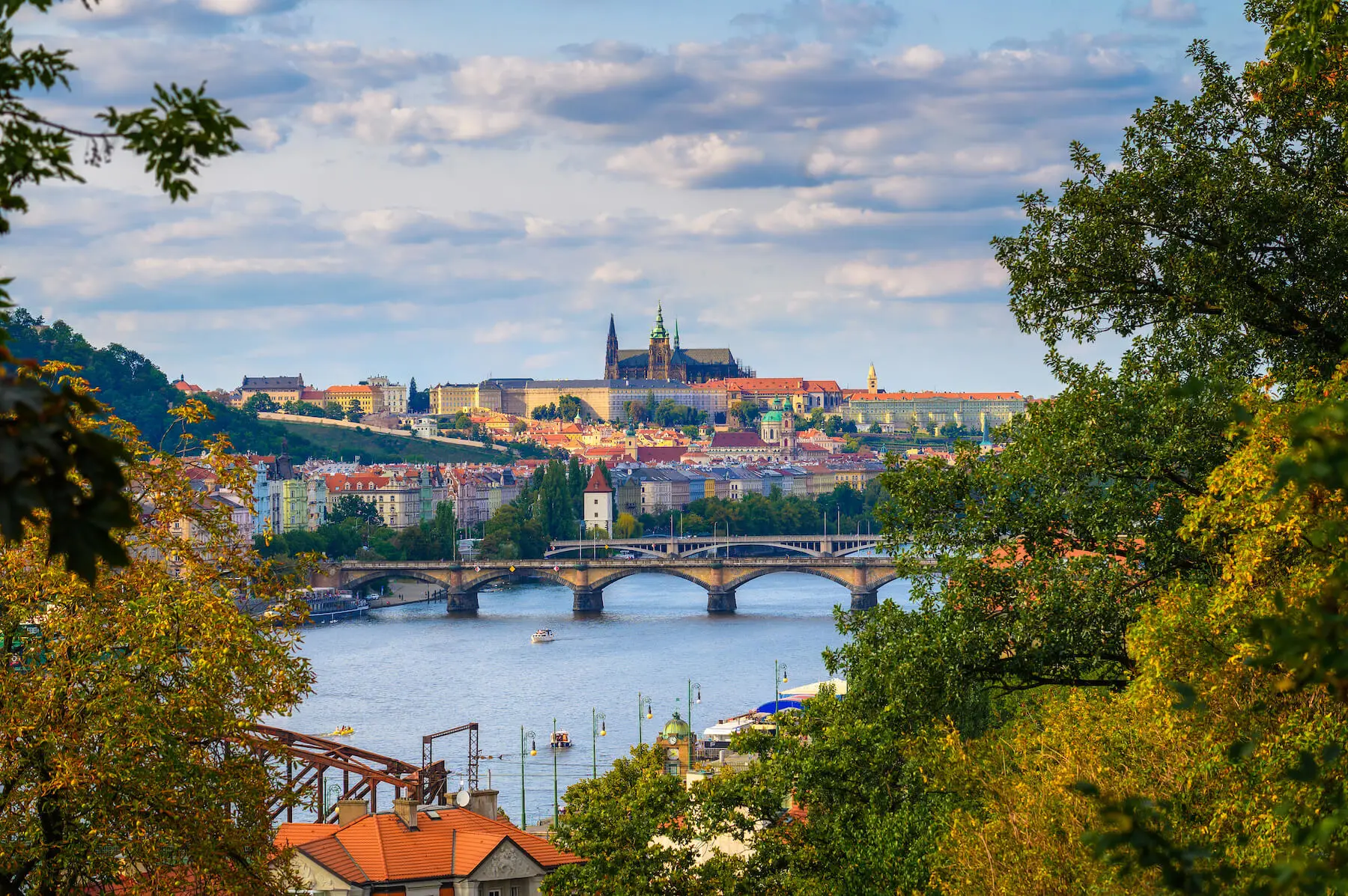
Fortress Walls Viewpoint
 Highlight of Vyšehrad Fortress
Highlight of Vyšehrad FortressEnjoy stunning city views from atop the fortress walls.
Prague Castle and most of the city can be seen from above the cavernous Gorlice Hall. A walk along the fortress walls is a delightful experience, as you will enjoy numerous excellent vantage points on all sides of the fortress, enjoying Prague from a different perspective without all the crowds.
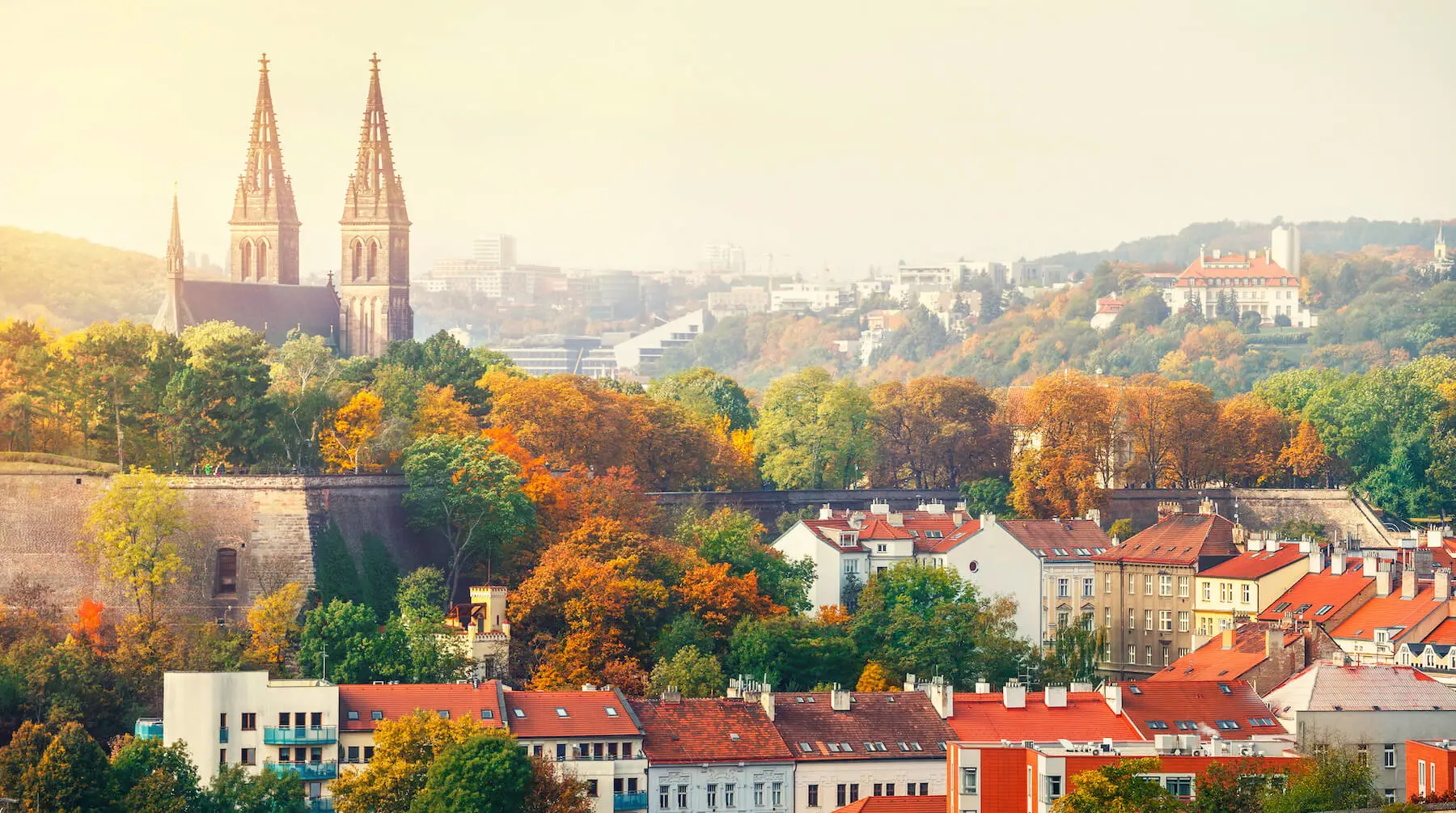
Brick Gate and Casemates
 Highlight of Vyšehrad Fortress
Highlight of Vyšehrad FortressVenture within the fortress's massive 17th-century walls and gates.
A tour through the Brick Gate on the fortress's north side will take you through the narrow underground passageways and casemates of the fortress. You will see a historical exhibit on Vyšehrad as well as the underground Gorlice Hall, where the original statues from the Charles Bridge are stored for safe-keeping (many of the statues on the bridge are copies).

Vyšehrad Cemetery
 Highlight of Vyšehrad Fortress
Highlight of Vyšehrad FortressWander in a graveyard where many prominent Czechs are buried, such as famed composers Dvořák & Smětana.
The cemetery is filled with many tombs which are works of art in themselves, including several arcades with beautiful art-nouveau frescoes. The monumental Slavin tomb is a sort of pantheon of the Czech people, with over 55 prominent persons buried within it. Dvořák and Smětana have their own more modest graves.

Fortress Walls Viewpoint
 Highlight of Vyšehrad Fortress
Highlight of Vyšehrad FortressEnjoy stunning city views from atop the fortress walls.
Prague Castle and most of the city can be seen from above the cavernous Gorlice Hall. A walk along the fortress walls is a delightful experience, as you will enjoy numerous excellent vantage points on all sides of the fortress, enjoying Prague from a different perspective without all the crowds.

Brick Gate and Casemates
 Highlight of Vyšehrad Fortress
Highlight of Vyšehrad FortressVenture within the fortress's massive 17th-century walls and gates.
A tour through the Brick Gate on the fortress's north side will take you through the narrow underground passageways and casemates of the fortress. You will see a historical exhibit on Vyšehrad as well as the underground Gorlice Hall, where the original statues from the Charles Bridge are stored for safe-keeping (many of the statues on the bridge are copies).

Vyšehrad Cemetery
 Highlight of Vyšehrad Fortress
Highlight of Vyšehrad FortressWander in a graveyard where many prominent Czechs are buried, such as famed composers Dvořák & Smětana.
The cemetery is filled with many tombs which are works of art in themselves, including several arcades with beautiful art-nouveau frescoes. The monumental Slavin tomb is a sort of pantheon of the Czech people, with over 55 prominent persons buried within it. Dvořák and Smětana have their own more modest graves.
prev
next

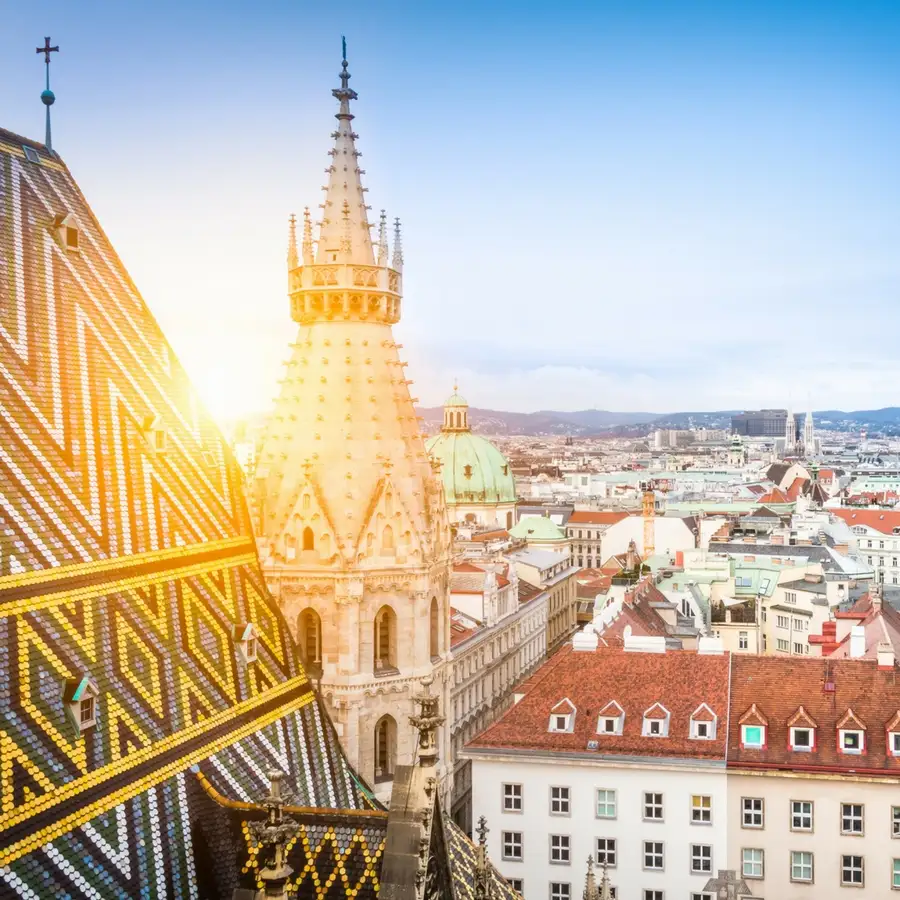
Day 5
Vienna
Day 5
Vienna




9:00 AM
Guided Walk of the Inner City
This tour takes you back in history to explore the Vienna that stood within the old city walls. You will learn about the humble beginnings of Vienna before it became the capital of a great empire and one of the most important cities in Europe. You will discover how Vienna's early inhabitants lived and how they left their mark on the city and its beautiful Medieval, Renaissance, and Baroque architecture.

Day 5
Vienna



Day 6
Vienna
Day 6
Vienna


Early Morning to Early Evening
Wachau Valley
A one-and-a-half-hour train ride from Vienna brings you to the town of Melk, where you can tour the vast Melk Abbey. From there you can begin a 22-mile cruise through the Wachau Valley, considered the most beautiful stretch of the entire Danube River. You'll pass medieval castle ruins, hills covered in vineyards, and several charming villages, where you can debark to try some wine or take a hike up to a castle. The valley is also a perfect destination for cyclers and winery tours.
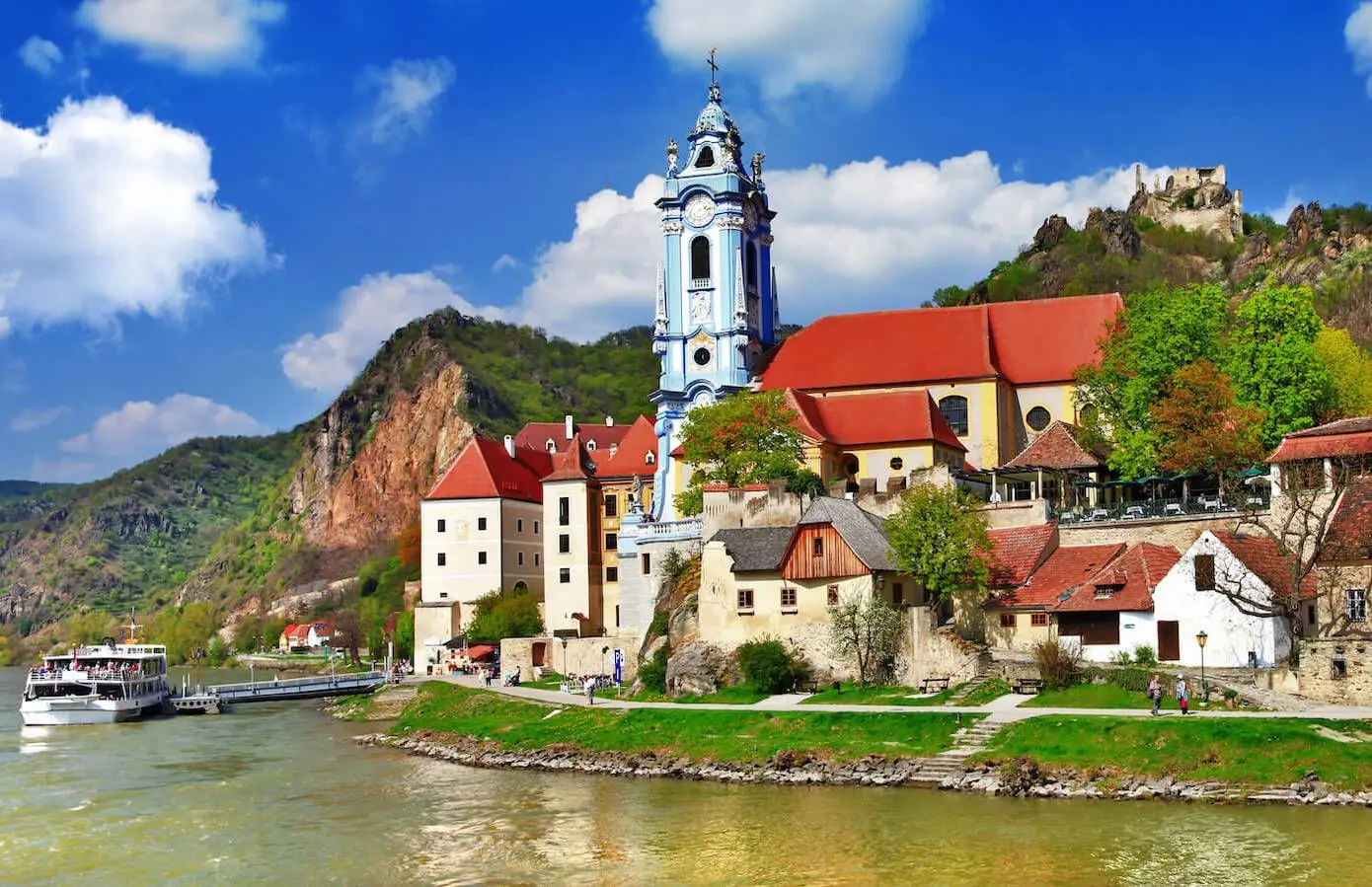
Dürnstein
Explore the twisting narrow lanes of this delightful monastery town.
Show More
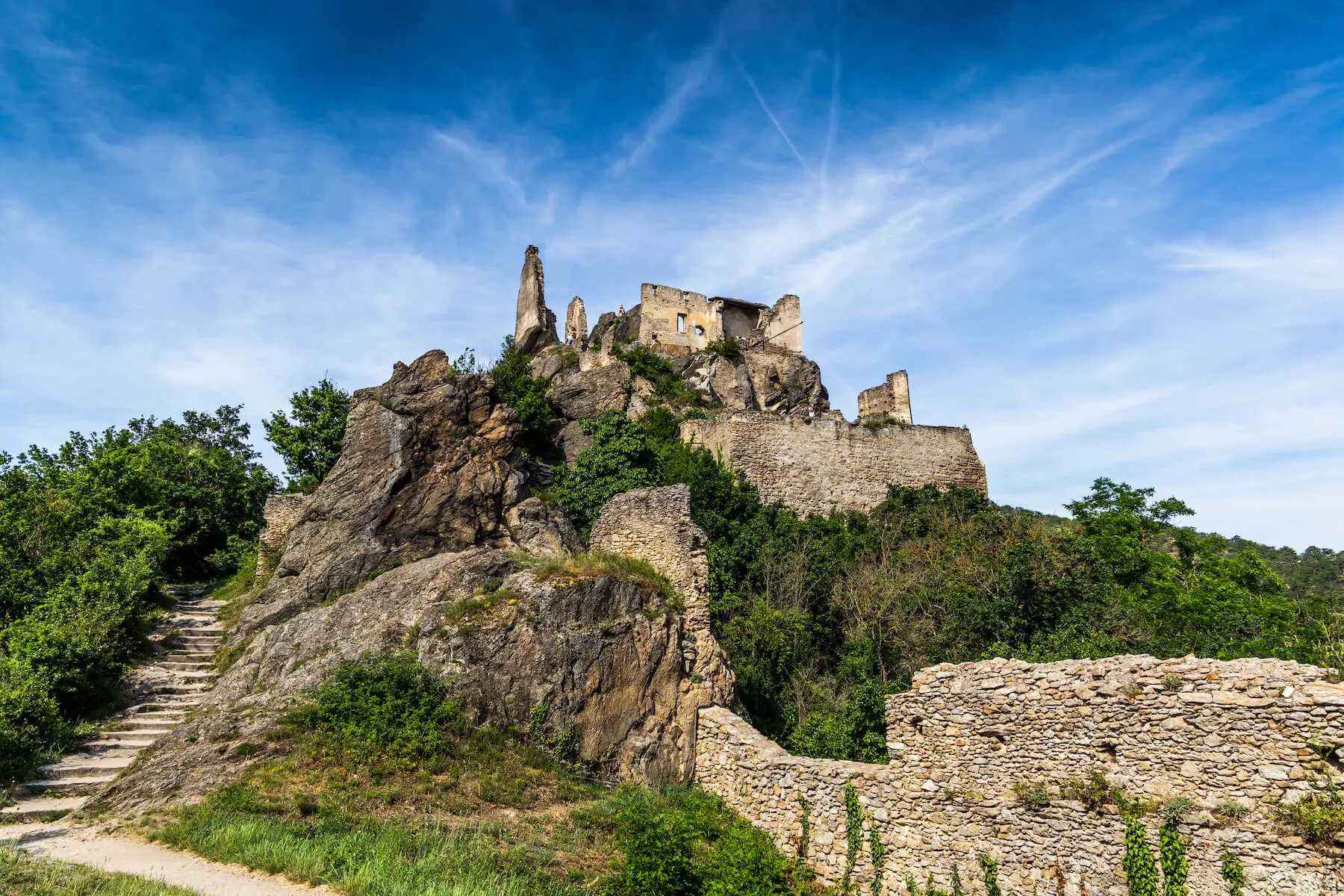
Dürnstein Castle Ruins
Hike to the dramatic ruins of a medieval castle built in 1100's.
Show More

Melk Abbey
Tour a huge and splendid Baroque monastery.
Show More

Spitz
Stop to taste the wine in a postcard-pretty town surrounded by vineyards.
Show More

Dürnstein
Explore the twisting narrow lanes of this delightful monastery town.
Show More

Dürnstein Castle Ruins
Hike to the dramatic ruins of a medieval castle built in 1100's.
Show More

Melk Abbey
Tour a huge and splendid Baroque monastery.
Show More

Spitz
Stop to taste the wine in a postcard-pretty town surrounded by vineyards.
Show More
prev
next

Day 6
Vienna


Dürnstein
 Highlight of Wachau Valley
Highlight of Wachau ValleyExplore the twisting narrow lanes of this delightful monastery town.
Named for the castle that overlooks it, Dürnstein is probably the most-visited stop in the Wachau valley. Reached by an ancient tunnel leading from the boat docks, it is well-known for its wine as well as the beautiful blue church tower of its Augustinian monastery.

Dürnstein Castle Ruins
 Highlight of Wachau Valley
Highlight of Wachau ValleyHike to the dramatic ruins of a medieval castle built in 1100's.
The hike leading to the castle is steep, but the amazing view you are rewarded with makes it all worth while. The fascinating ruins are extensive and can be freely explored. The castle was made famous by its most illustrious prisoner, King Richard the Lionhearted of England, who was held there for ransom.
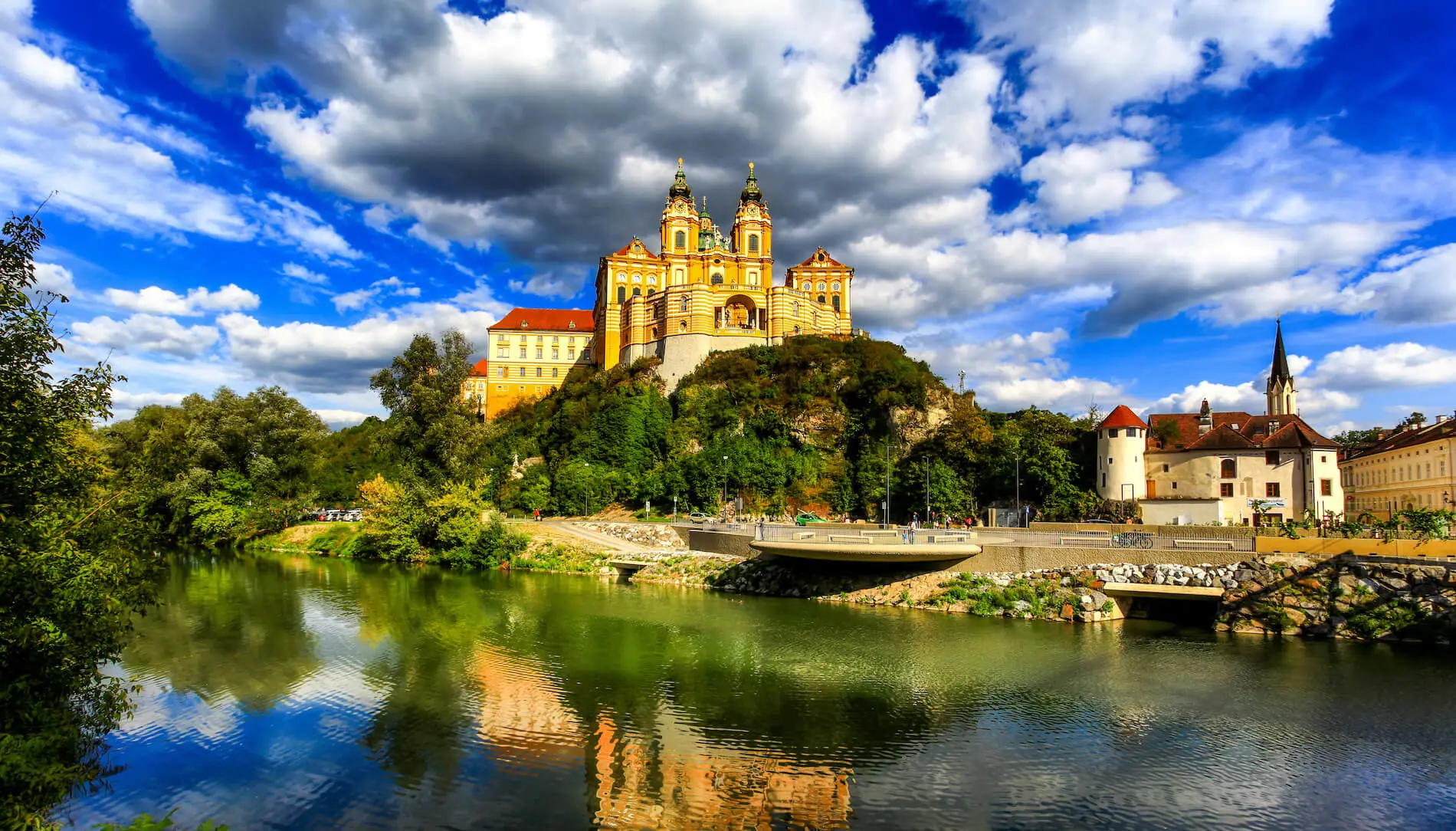
Melk Abbey
 Highlight of Wachau Valley
Highlight of Wachau ValleyTour a huge and splendid Baroque monastery.
Founded in 1089 when the Austrian duke gave one of his castles to Benedictine monks, Melk Abbey is now both a place of pilgrimage and a major tourist attraction. Visitors come for the museum of religious artifacts, the jaw-dropping library, and the sublime church. The town square below the abbey is also a great place for a meal or wine.
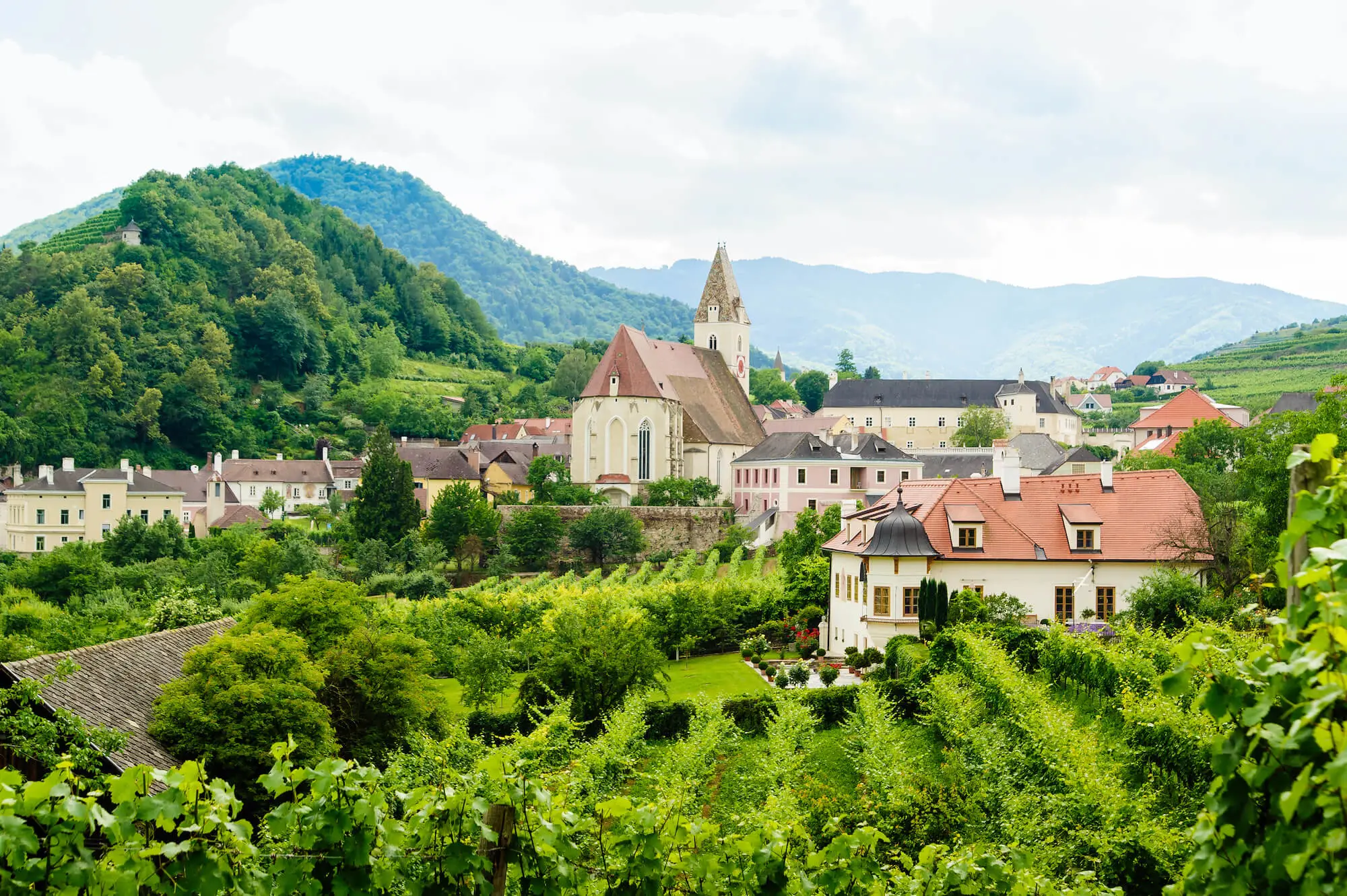
Spitz
 Highlight of Wachau Valley
Highlight of Wachau ValleyStop to taste the wine in a postcard-pretty town surrounded by vineyards.
Spitz is a favorite stop due to its bucolic atmosphere and abundance of wine taverns and restaurants. It is also home to the Tausendeimerberg or "House of a Thousand Buckets" (so named for the abundance of wine fields) and the castle ruins of Hinterhaus, which make for a nice (if steep) hike from the village.

Dürnstein
 Highlight of Wachau Valley
Highlight of Wachau ValleyExplore the twisting narrow lanes of this delightful monastery town.
Named for the castle that overlooks it, Dürnstein is probably the most-visited stop in the Wachau valley. Reached by an ancient tunnel leading from the boat docks, it is well-known for its wine as well as the beautiful blue church tower of its Augustinian monastery.

Dürnstein Castle Ruins
 Highlight of Wachau Valley
Highlight of Wachau ValleyHike to the dramatic ruins of a medieval castle built in 1100's.
The hike leading to the castle is steep, but the amazing view you are rewarded with makes it all worth while. The fascinating ruins are extensive and can be freely explored. The castle was made famous by its most illustrious prisoner, King Richard the Lionhearted of England, who was held there for ransom.

Melk Abbey
 Highlight of Wachau Valley
Highlight of Wachau ValleyTour a huge and splendid Baroque monastery.
Founded in 1089 when the Austrian duke gave one of his castles to Benedictine monks, Melk Abbey is now both a place of pilgrimage and a major tourist attraction. Visitors come for the museum of religious artifacts, the jaw-dropping library, and the sublime church. The town square below the abbey is also a great place for a meal or wine.

Spitz
 Highlight of Wachau Valley
Highlight of Wachau ValleyStop to taste the wine in a postcard-pretty town surrounded by vineyards.
Spitz is a favorite stop due to its bucolic atmosphere and abundance of wine taverns and restaurants. It is also home to the Tausendeimerberg or "House of a Thousand Buckets" (so named for the abundance of wine fields) and the castle ruins of Hinterhaus, which make for a nice (if steep) hike from the village.
prev
next

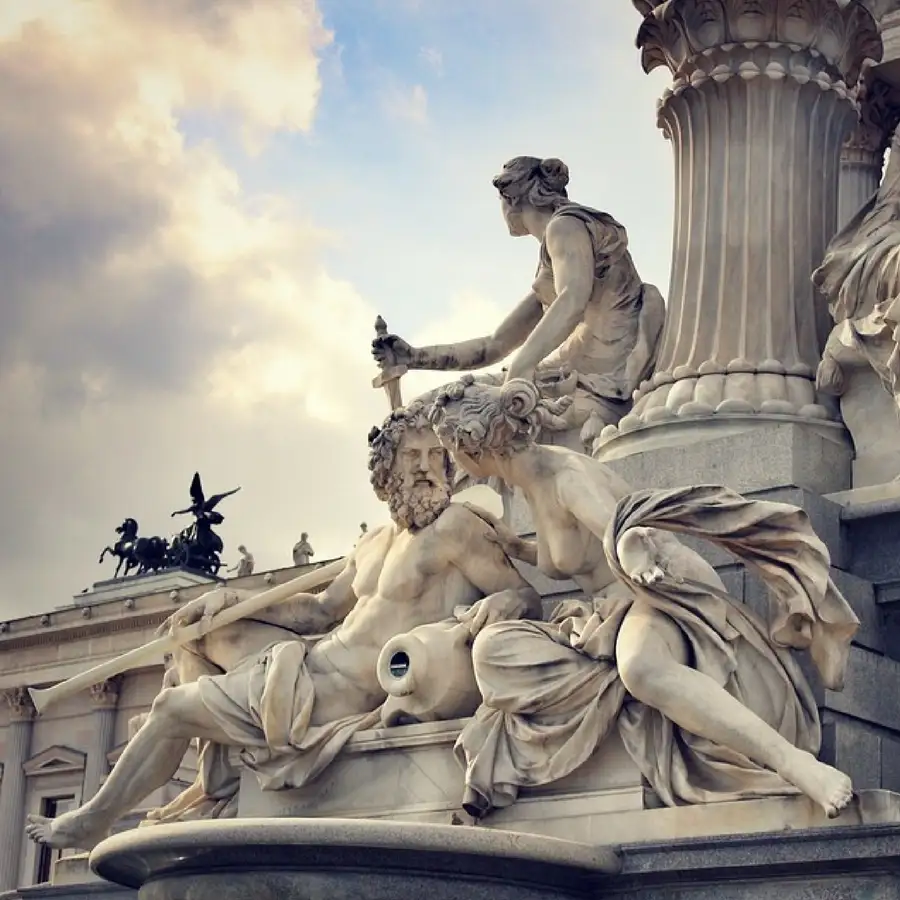
Day 7
Vienna to Bratislava
Day 7
Vienna to Bratislava





Morning
Schönbrunn Palace
The magnificent Baroque palace of Schönbrunn is most famously associated with Empress Maria Theresa, who lived here surrounded by 16 little archdukes and duchesses who also happened to be her children. On your tour of the palace, you will see how Maria Theresa and other past imperial residents lived. No visit is complete without a stroll in the vast gardens surrounding the palace.

Schönbrunn Zoo
Join local families enjoying one of Europe's best zoos.
Show More

Schönbrunn Gardens
Get lost in the huge imperial gardens.
Show More

Schönbrunn Zoo
Join local families enjoying one of Europe's best zoos.
Show More

Schönbrunn Gardens
Get lost in the huge imperial gardens.
Show More

Schönbrunn Zoo
Join local families enjoying one of Europe's best zoos.
Show More

Schönbrunn Gardens
Get lost in the huge imperial gardens.
Show More
prev
next

Day 7
Vienna to Bratislava


Schönbrunn Zoo
 Highlight of Schönbrunn Palace
Highlight of Schönbrunn PalaceJoin local families enjoying one of Europe's best zoos.
With an entrance directly connected to the Schönbrunn palace gardens, visiting the zoo can be a great addition to any trip to the palace. Founded as an imperial menagerie in 1752, it is the oldest continually operated zoo in the world, and today is home to many rare species such as giant pandas.
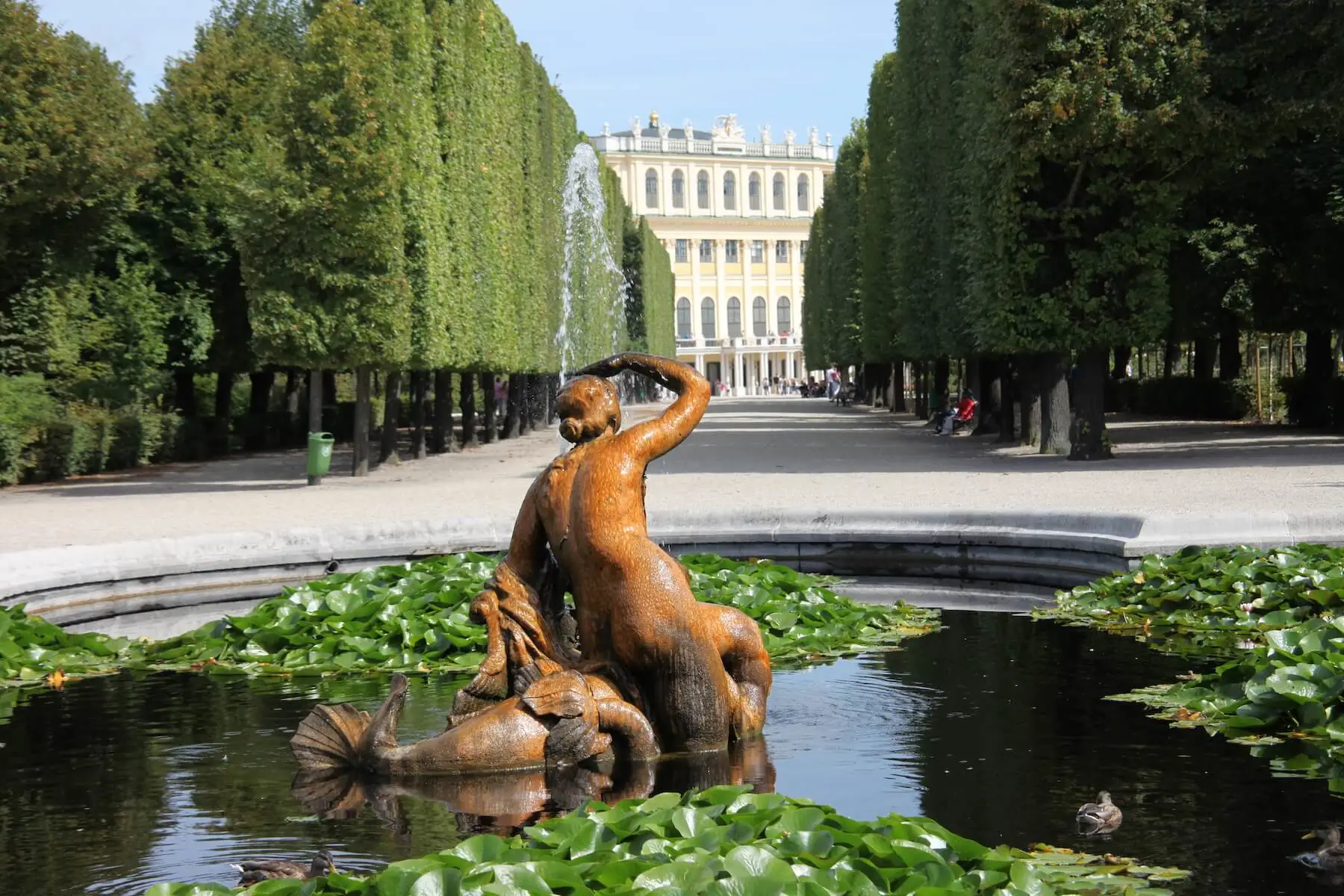
Schönbrunn Gardens
 Highlight of Schönbrunn Palace
Highlight of Schönbrunn PalaceGet lost in the huge imperial gardens.
The beautiful park is a mix of formal gardens and woodlands, and is dotted with enchanting statues & fountains, including a massive fountain of Neptune. The Gloriette pavilion sits on a rise opposite the palace and commands a wonderful view. Kids will love the labyrinth, racing to find the tower at the center of the maze.

Schönbrunn Zoo
 Highlight of Schönbrunn Palace
Highlight of Schönbrunn PalaceJoin local families enjoying one of Europe's best zoos.
With an entrance directly connected to the Schönbrunn palace gardens, visiting the zoo can be a great addition to any trip to the palace. Founded as an imperial menagerie in 1752, it is the oldest continually operated zoo in the world, and today is home to many rare species such as giant pandas.

Schönbrunn Gardens
 Highlight of Schönbrunn Palace
Highlight of Schönbrunn PalaceGet lost in the huge imperial gardens.
The beautiful park is a mix of formal gardens and woodlands, and is dotted with enchanting statues & fountains, including a massive fountain of Neptune. The Gloriette pavilion sits on a rise opposite the palace and commands a wonderful view. Kids will love the labyrinth, racing to find the tower at the center of the maze.

Schönbrunn Zoo
 Highlight of Schönbrunn Palace
Highlight of Schönbrunn PalaceJoin local families enjoying one of Europe's best zoos.
With an entrance directly connected to the Schönbrunn palace gardens, visiting the zoo can be a great addition to any trip to the palace. Founded as an imperial menagerie in 1752, it is the oldest continually operated zoo in the world, and today is home to many rare species such as giant pandas.

Schönbrunn Gardens
 Highlight of Schönbrunn Palace
Highlight of Schönbrunn PalaceGet lost in the huge imperial gardens.
The beautiful park is a mix of formal gardens and woodlands, and is dotted with enchanting statues & fountains, including a massive fountain of Neptune. The Gloriette pavilion sits on a rise opposite the palace and commands a wonderful view. Kids will love the labyrinth, racing to find the tower at the center of the maze.
prev
next


Day 8
Bratislava
Day 8
Bratislava



9:00 AM - 1:00 PM
Highlights Guided Tour
Regale yourself with the picturesque Old Town of Bratislava, starting with Hviezdoslav Square, Bratislava`s first public promenade crowned by the majestic building of the Slovak National Theatre. Stroll around the Main Square up to the Primate`s Residence and see priceless tapestries while learning about the mysteries that surround them. Your guide will provide you with entertaining history lessons not only about Bratislava but also the Kingdom of Hungary, Austria-Hungary, and Czechoslovakia.
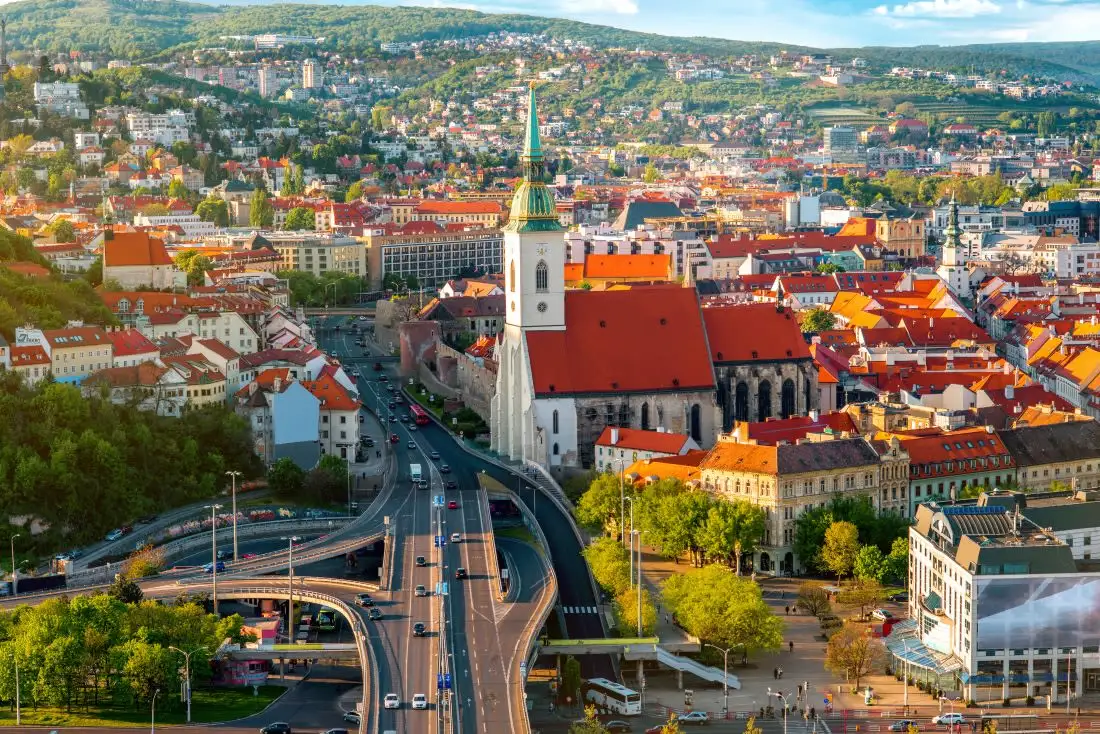
St. Martin's Cathedral
Marvel at this 800-year-old cathedral; you'll quickly forget about the Communist-era Highway outside.
Show More

Historical Slovak National Theatre
Admire the elegance of a symbol of Slovak national identity since 1920.
Show More

Bratislava Castle
Offering striking views and a bit of history of a young country in an ancient land.
Show More

Main Square
Take a break in the historic heart of Bratislava's Main Square, a lively hub for people-watching.
Show More

St. Martin's Cathedral
Marvel at this 800-year-old cathedral; you'll quickly forget about the Communist-era Highway outside.
Show More

Historical Slovak National Theatre
Admire the elegance of a symbol of Slovak national identity since 1920.
Show More

Bratislava Castle
Offering striking views and a bit of history of a young country in an ancient land.
Show More

Main Square
Take a break in the historic heart of Bratislava's Main Square, a lively hub for people-watching.
Show More
prev
next

Day 8
Bratislava


St. Martin's Cathedral
 Highlight of Highlights Guided Tour
Highlight of Highlights Guided TourMarvel at this 800-year-old cathedral; you'll quickly forget about the Communist-era Highway outside.
Walk in the footsteps of kings and queens in St. Martin’s Cathedral the largest and most important church in Bratislava. Hungarian kings and their wives were crowned here between 1563 and 1830. A golden, 300 kg. Hungarian crown sitting atop the 85-meter tower still commemorates these coronations. Inside, transcend the day-to-day with the magnificent altarpieces and stained glass - their beauty resists the thrum of the highway outside. The Communist regime bulldozed the cathedral's medieval environs to build this motorway. Feel free to laugh or shake your head, the juxtaposition of St. Martin and its highway are part of Bratislava's vibrant identity.
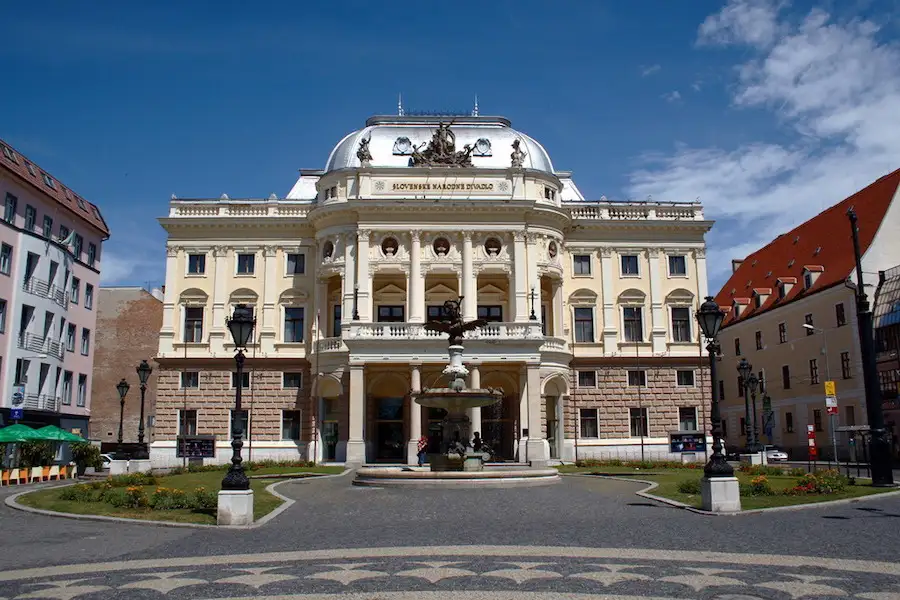
Historical Slovak National Theatre
 Highlight of Highlights Guided Tour
Highlight of Highlights Guided TourAdmire the elegance of a symbol of Slovak national identity since 1920.
Bulit in the 18th century and reconstructed between 1885-1886 to its present appearance, the beauty of this theater might inspire you to song. Its ornate exterior hides a modernized auditorium, intricate frescoes, and sumptuous gold and crimson decorations. As the oldest and most significant theater in Slovakia, it has played a pivotal role in the development of Slovak performing arts, hosting a rich array of opera, ballet, and drama performances.

Bratislava Castle
 Highlight of Highlights Guided Tour
Highlight of Highlights Guided TourOffering striking views and a bit of history of a young country in an ancient land.
Revel in sights both ancient and new from this cliffside castle above Bratislava. The gleaming fortress is a far cry from its original 9th-century hill fort, and its high, white walls change color with the day, capturing sunlight from morning until evening. Sunsets are particularly romantic for the views across the Danube or admiring the last glints of light across Old Town. One may enjoy the Slovak National Museum housed inside the castle as well; it's a great place to take time and understand the rich and very long history of the Slovakian land.

Main Square
 Highlight of Highlights Guided Tour
Highlight of Highlights Guided TourTake a break in the historic heart of Bratislava's Main Square, a lively hub for people-watching.
Bratislava's Main Square is the vibrant heart of the city surrounded by noteworthy buildings like the Old Town Hall and medieval burgher houses. This historic square hosts markets, events, and is a perfect spot to stop for refreshments while absorbing the Old-World atmosphere. Among the highlights, the Old Town Hall, with its distinctive tower and blend of Gothic, Renaissance, and Baroque elements, stands as a symbol of Bratislava's diverse architectural heritage.

St. Martin's Cathedral
 Highlight of Highlights Guided Tour
Highlight of Highlights Guided TourMarvel at this 800-year-old cathedral; you'll quickly forget about the Communist-era Highway outside.
Walk in the footsteps of kings and queens in St. Martin’s Cathedral the largest and most important church in Bratislava. Hungarian kings and their wives were crowned here between 1563 and 1830. A golden, 300 kg. Hungarian crown sitting atop the 85-meter tower still commemorates these coronations. Inside, transcend the day-to-day with the magnificent altarpieces and stained glass - their beauty resists the thrum of the highway outside. The Communist regime bulldozed the cathedral's medieval environs to build this motorway. Feel free to laugh or shake your head, the juxtaposition of St. Martin and its highway are part of Bratislava's vibrant identity.

Historical Slovak National Theatre
 Highlight of Highlights Guided Tour
Highlight of Highlights Guided TourAdmire the elegance of a symbol of Slovak national identity since 1920.
Bulit in the 18th century and reconstructed between 1885-1886 to its present appearance, the beauty of this theater might inspire you to song. Its ornate exterior hides a modernized auditorium, intricate frescoes, and sumptuous gold and crimson decorations. As the oldest and most significant theater in Slovakia, it has played a pivotal role in the development of Slovak performing arts, hosting a rich array of opera, ballet, and drama performances.

Bratislava Castle
 Highlight of Highlights Guided Tour
Highlight of Highlights Guided TourOffering striking views and a bit of history of a young country in an ancient land.
Revel in sights both ancient and new from this cliffside castle above Bratislava. The gleaming fortress is a far cry from its original 9th-century hill fort, and its high, white walls change color with the day, capturing sunlight from morning until evening. Sunsets are particularly romantic for the views across the Danube or admiring the last glints of light across Old Town. One may enjoy the Slovak National Museum housed inside the castle as well; it's a great place to take time and understand the rich and very long history of the Slovakian land.

Main Square
 Highlight of Highlights Guided Tour
Highlight of Highlights Guided TourTake a break in the historic heart of Bratislava's Main Square, a lively hub for people-watching.
Bratislava's Main Square is the vibrant heart of the city surrounded by noteworthy buildings like the Old Town Hall and medieval burgher houses. This historic square hosts markets, events, and is a perfect spot to stop for refreshments while absorbing the Old-World atmosphere. Among the highlights, the Old Town Hall, with its distinctive tower and blend of Gothic, Renaissance, and Baroque elements, stands as a symbol of Bratislava's diverse architectural heritage.
prev
next

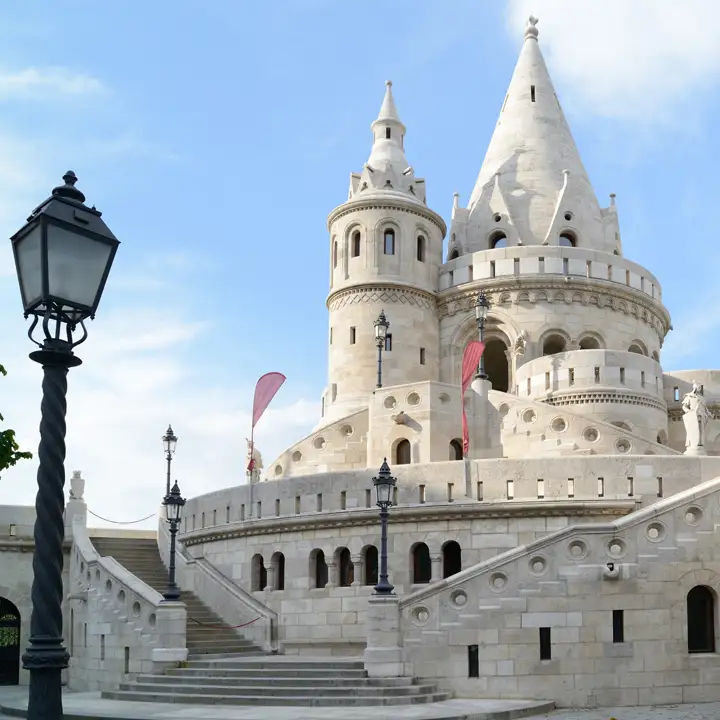
Day 9
Bratislava to Budapest
Day 9
Bratislava to Budapest





9:20 AM
Taxi to Bratislava Rail Station
Your hotel front desk will be happy to arrange a taxi pick up for you. Your itinerary will provide more information on ordering a taxi, as well as detailed information on navigating the train station and finding your train, making the whole process simple and stress-free.

Day 9
Bratislava to Budapest


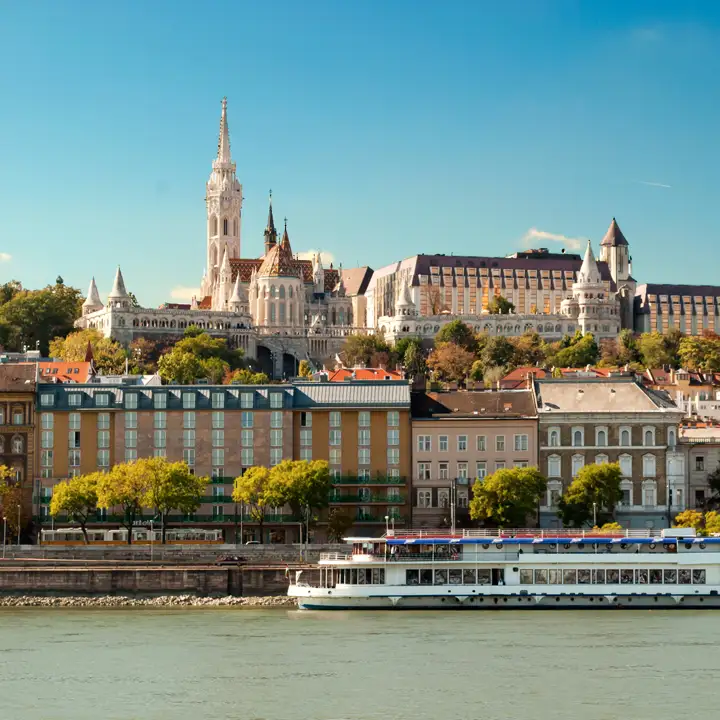
Day 10
Budapest
Day 10
Budapest



9:00 AM - 12:30 PM
Guided Walk in Budapest
During your tour you will take in a gorgeous vista of the city from the Fisherman's Bastion, explore the winding streets of the Castle District, gaze in awe at the striking interior of St. Stephen's Basilica, travel along the city's most elegant avenue and more. Along the way you will experience the city as a local does, stopping to check out intimate courtyards, enjoying a pastry and soaking in the ambiance of Budapest's most elegant cafes.

Day 10
Budapest


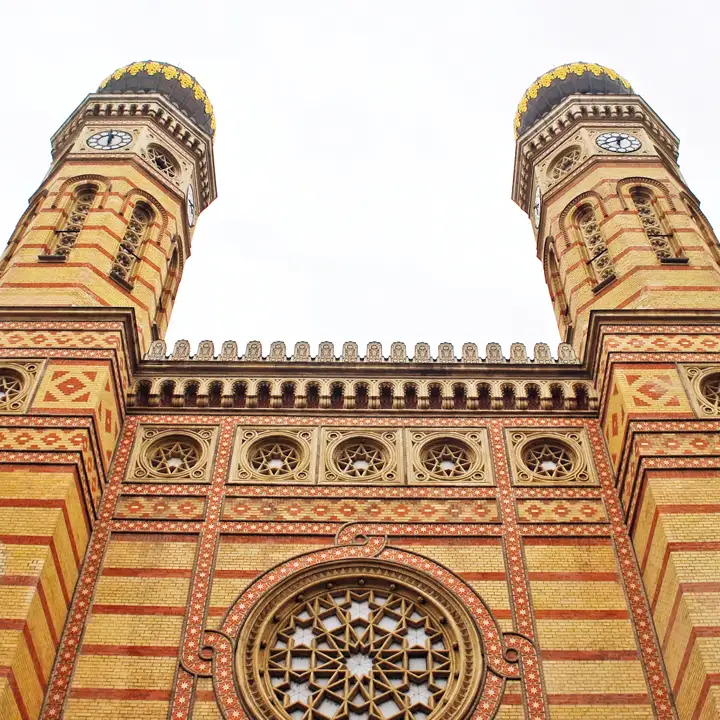
Day 11
Budapest
Day 11
Budapest



Morning
Jewish Quarter
Budapest was once the site of one of Europe's largest and most vibrant Jewish communities and contains the world's second largest synagogue – the Dohány Street Synagogue. A visit there is an impressive reminder of the wealth and influence the Jewish community in Hungary once possessed. A small but vibrant Jewish population still inhabits the Jewish Quarter today.

Szimpla Kert
Discover Budapest's most unique form of nightlife - pubs located in the ruins of old buildings!
Show More

Holocaust Memorial Center
Learn about the Holocaust in a former synagogue which honors Hungarian Jews killed in WWII.
Show More

Great Synagogue
Stare in awe at Europe's largest synagogue (and the second largest in the world).
Show More

Szimpla Kert
Discover Budapest's most unique form of nightlife - pubs located in the ruins of old buildings!
Show More

Holocaust Memorial Center
Learn about the Holocaust in a former synagogue which honors Hungarian Jews killed in WWII.
Show More

Great Synagogue
Stare in awe at Europe's largest synagogue (and the second largest in the world).
Show More

Szimpla Kert
Discover Budapest's most unique form of nightlife - pubs located in the ruins of old buildings!
Show More
prev
next

Day 11
Budapest


Szimpla Kert
 Highlight of Jewish Quarter
Highlight of Jewish QuarterDiscover Budapest's most unique form of nightlife - pubs located in the ruins of old buildings!
Szimpla Kert was the first pub located in a ruin, and it started a trend that is now a Budapest institution. These pubs have an eclectic vibe and are a great place to mix with the locals as well as other visitors. The concept dates back to the early 2000s when entrepreneurs took over abandoned spaces within dilapidated buildings for underground events. The 7th district, i.e. the Jewish Quarter, is the best place to find them.

Holocaust Memorial Center
 Highlight of Jewish Quarter
Highlight of Jewish QuarterLearn about the Holocaust in a former synagogue which honors Hungarian Jews killed in WWII.
The refurbished 1920s synagogue now serves as a museum and memorial for Hungarian Jewish victims of the Holocaust. It also functions as a documentation center. Note, it is actually not located in the Jewish Quarter, which is in Budapest's 7th District, but the nearby 9th District.

Great Synagogue
 Highlight of Jewish Quarter
Highlight of Jewish QuarterStare in awe at Europe's largest synagogue (and the second largest in the world).
Also known as the Dohány Street Synagogue, it possesses a striking Byzantine Moorish style exterior with an ornate dome, and an opulent interior. Adjacent to it are a memorial to the Holocaust in the form of a weeping willow, and a museum of Jewish culture. Entry is by guided tour only, although wait times can be very long so booking early is recommended.

Szimpla Kert
 Highlight of Jewish Quarter
Highlight of Jewish QuarterDiscover Budapest's most unique form of nightlife - pubs located in the ruins of old buildings!
Szimpla Kert was the first pub located in a ruin, and it started a trend that is now a Budapest institution. These pubs have an eclectic vibe and are a great place to mix with the locals as well as other visitors. The concept dates back to the early 2000s when entrepreneurs took over abandoned spaces within dilapidated buildings for underground events. The 7th district, i.e. the Jewish Quarter, is the best place to find them.

Holocaust Memorial Center
 Highlight of Jewish Quarter
Highlight of Jewish QuarterLearn about the Holocaust in a former synagogue which honors Hungarian Jews killed in WWII.
The refurbished 1920s synagogue now serves as a museum and memorial for Hungarian Jewish victims of the Holocaust. It also functions as a documentation center. Note, it is actually not located in the Jewish Quarter, which is in Budapest's 7th District, but the nearby 9th District.

Great Synagogue
 Highlight of Jewish Quarter
Highlight of Jewish QuarterStare in awe at Europe's largest synagogue (and the second largest in the world).
Also known as the Dohány Street Synagogue, it possesses a striking Byzantine Moorish style exterior with an ornate dome, and an opulent interior. Adjacent to it are a memorial to the Holocaust in the form of a weeping willow, and a museum of Jewish culture. Entry is by guided tour only, although wait times can be very long so booking early is recommended.

Szimpla Kert
 Highlight of Jewish Quarter
Highlight of Jewish QuarterDiscover Budapest's most unique form of nightlife - pubs located in the ruins of old buildings!
Szimpla Kert was the first pub located in a ruin, and it started a trend that is now a Budapest institution. These pubs have an eclectic vibe and are a great place to mix with the locals as well as other visitors. The concept dates back to the early 2000s when entrepreneurs took over abandoned spaces within dilapidated buildings for underground events. The 7th district, i.e. the Jewish Quarter, is the best place to find them.
prev
next


Day 12
Depart Budapest
Day 12
Depart Budapest

To Be Determined
Taxi Transfer to Airport
Budapest has one main airport, Budapest Ferenc Liszt International Airport, where almost all visitors depart. Your hotel can arrange a reliable taxi (there is no Uber in Budapest). You can also arrange a private transfer. If you are picked up about two hours and forty-five minutes before your departure time, you should arrive at the airport with about two hours to spare, depending on traffic. If you are leaving during rush hour, you may want to budget an extra fifteen to thirty minutes.

Day 12
Depart Budapest


What's Included In Crowns & Castles of Central Europe Trip

Pre-Paid Tours and Activities:
- Prague Castle & Royal Route Guided Walk
- Guided Walk through Vienna's Inner City
- Guide Walking Tour of the Bratislava City Highlights
- Best of Budapest: Half-Day Walking Tour of Highlights & Hidden Finds

Pre-Paid Transportation:
- 2nd Class Train Tickets from Prague to Vienna
- 2nd Class Train Tickets from Vienna-Bratislava
- 2nd Class Train Tickets from Bratislava-Budapest
- Public Transport Tickets for Vienna
- Private Transfer from the Budapest Rail Station

Accommodation:
- 3 nights at a hotel of your choice in Prague
- 3 nights at a hotel of your choice in Vienna
- 2 nights at a hotel of your choice in Bratislava
- 3 nights at a hotel of your choice in Budapest

Go Real Travel Mobile App:
- Itinerary Plan & Reservations Info
- Points of Interest
- Detailed Travel Information
- Maps & Directions
Other Trips You May Like

10 Days
From$2249USD
Perfect Whirlwind Itinerary to Prague, Salzburg, Vienna & Budapest

Czech Republic, Austria, Hungary
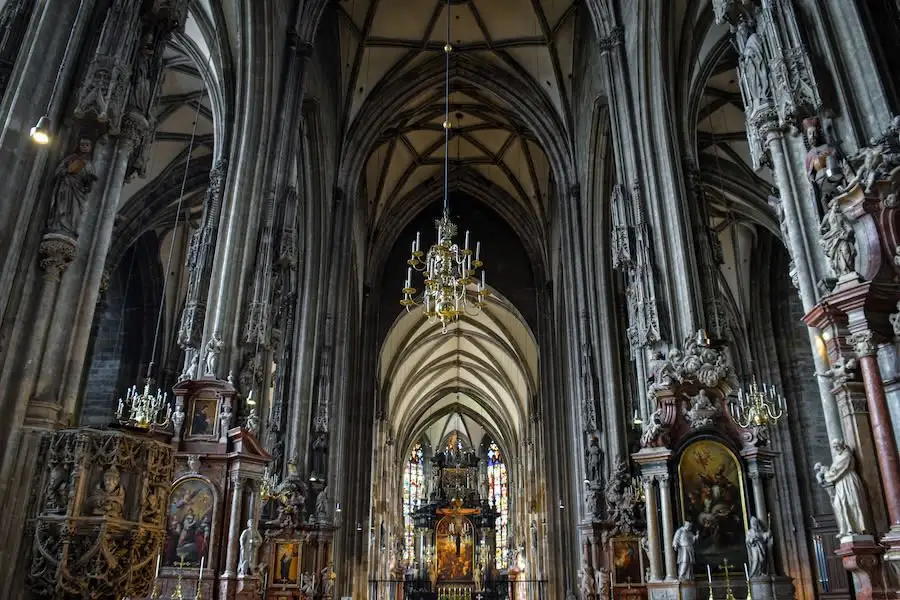
12 Days
From$2290USD
Enchanting Central Europe: Prague, Salzburg, Vienna, and Budapest

Czech Republic, Austria, Hungary

12 Days
From$2350USD
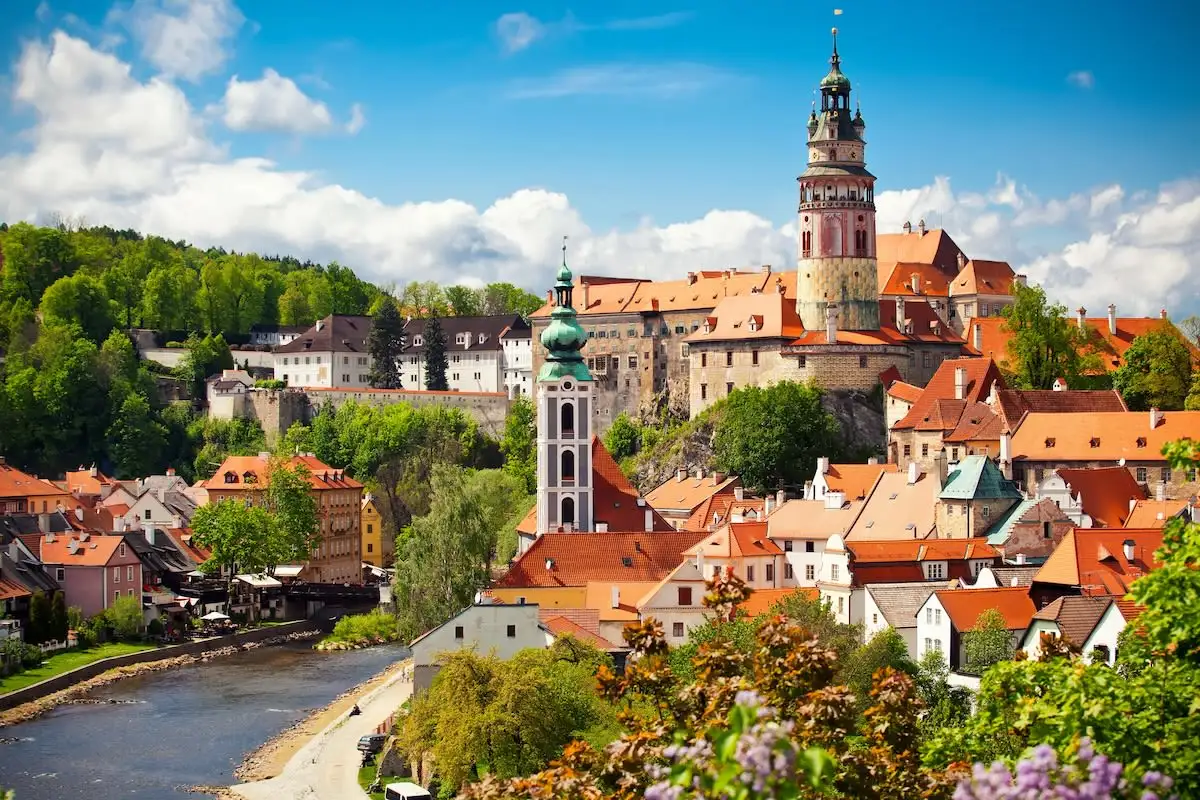
10 Days
From$1799USD
Central European Rhapsody: A Cultural and Historical Odyssey

Czech Republic, Austria, Hungary

14 Days
From$2350USD
Imperial Elegance: Prague, Vienna and Budapest Itinerary 14 Days

Czech Republic, Austria, Hungary

7 Days
From$1695USD

15 Days
From$2750USD
Prague, Vienna, and Budapest, 15 Days of Must See Sights & Local Scenes

Czech Republic, Austria, Hungary

8 Days
From$1425USD
Enchanting Central Europe: 8-Days in Prague, Vienna & Budapest

Czech Republic, Austria, Hungary

12 Days
From$2675USD
Jewish Heritage and Scenic Rivers: A Journey through Prague, Vienna, and Budapest

Hungary, Austria, Czech Republic

10 Days
From$2249USD
Perfect Whirlwind Itinerary to Prague, Salzburg, Vienna & Budapest

Czech Republic, Austria, Hungary

12 Days
From$2290USD
Enchanting Central Europe: Prague, Salzburg, Vienna, and Budapest

Czech Republic, Austria, Hungary

12 Days
From$2350USD

10 Days
From$1799USD
Central European Rhapsody: A Cultural and Historical Odyssey

Czech Republic, Austria, Hungary

14 Days
From$2350USD
Imperial Elegance: Prague, Vienna and Budapest Itinerary 14 Days

Czech Republic, Austria, Hungary

7 Days
From$1695USD

15 Days
From$2750USD
Prague, Vienna, and Budapest, 15 Days of Must See Sights & Local Scenes

Czech Republic, Austria, Hungary

8 Days
From$1425USD
Enchanting Central Europe: 8-Days in Prague, Vienna & Budapest

Czech Republic, Austria, Hungary

12 Days
From$2675USD
Jewish Heritage and Scenic Rivers: A Journey through Prague, Vienna, and Budapest

Hungary, Austria, Czech Republic
prev
next
Featured Blogs
prev
next
Our Customers Say It Best
Marianne Strydom, Paarl, South Africa
I just wanted to thank you for organizing an amazing trip for me – I packed in so much in such a short period of time and everything was just perfect. The way you do things makes it possible to really get to know the destination, which for me as a travel agent could not have been better. 

Otto Chuy, Los Angeles, California
I am still surprised how everything worked as planned, without a hitch. All instructions in your itinerary were precise and correct. Your suggestions and comments in each of the locations we went to were very helpful. All your guides, without exception, were wonderful and exactly on time. 

Malini Dutta, Boston, Massachusetts
We can't thank you enough for the detailed plans, maps, and suggestions. It really felt that someone was holding our hands and showing us around. We had all the excitement of discovering foreign lands, with none of the problems that can happen while negotiating unfamiliar places. In fact, all the cities felt like home within a few hours of arriving and exploring. 

Bev and Mark Frankel, Williamsburg, Virginia
We could not be more pleased with Go Real Travel! You took the guess work out of things like public transport but still managed to allow us the freedom to tour as we wanted. Our guides were exceptional and every time I saw a Viking Cruise tour of 25 people, I realized the quality experience we were getting with Go Real. 

Marianne Strydom, Paarl, South Africa
I just wanted to thank you for organizing an amazing trip for me – I packed in so much in such a short period of time and everything was just perfect. The way you do things makes it possible to really get to know the destination, which for me as a travel agent could not have been better. 

Otto Chuy, Los Angeles, California
I am still surprised how everything worked as planned, without a hitch. All instructions in your itinerary were precise and correct. Your suggestions and comments in each of the locations we went to were very helpful. All your guides, without exception, were wonderful and exactly on time. 

Malini Dutta, Boston, Massachusetts
We can't thank you enough for the detailed plans, maps, and suggestions. It really felt that someone was holding our hands and showing us around. We had all the excitement of discovering foreign lands, with none of the problems that can happen while negotiating unfamiliar places. In fact, all the cities felt like home within a few hours of arriving and exploring. 

Bev and Mark Frankel, Williamsburg, Virginia
We could not be more pleased with Go Real Travel! You took the guess work out of things like public transport but still managed to allow us the freedom to tour as we wanted. Our guides were exceptional and every time I saw a Viking Cruise tour of 25 people, I realized the quality experience we were getting with Go Real. 



Explore cities in more detail
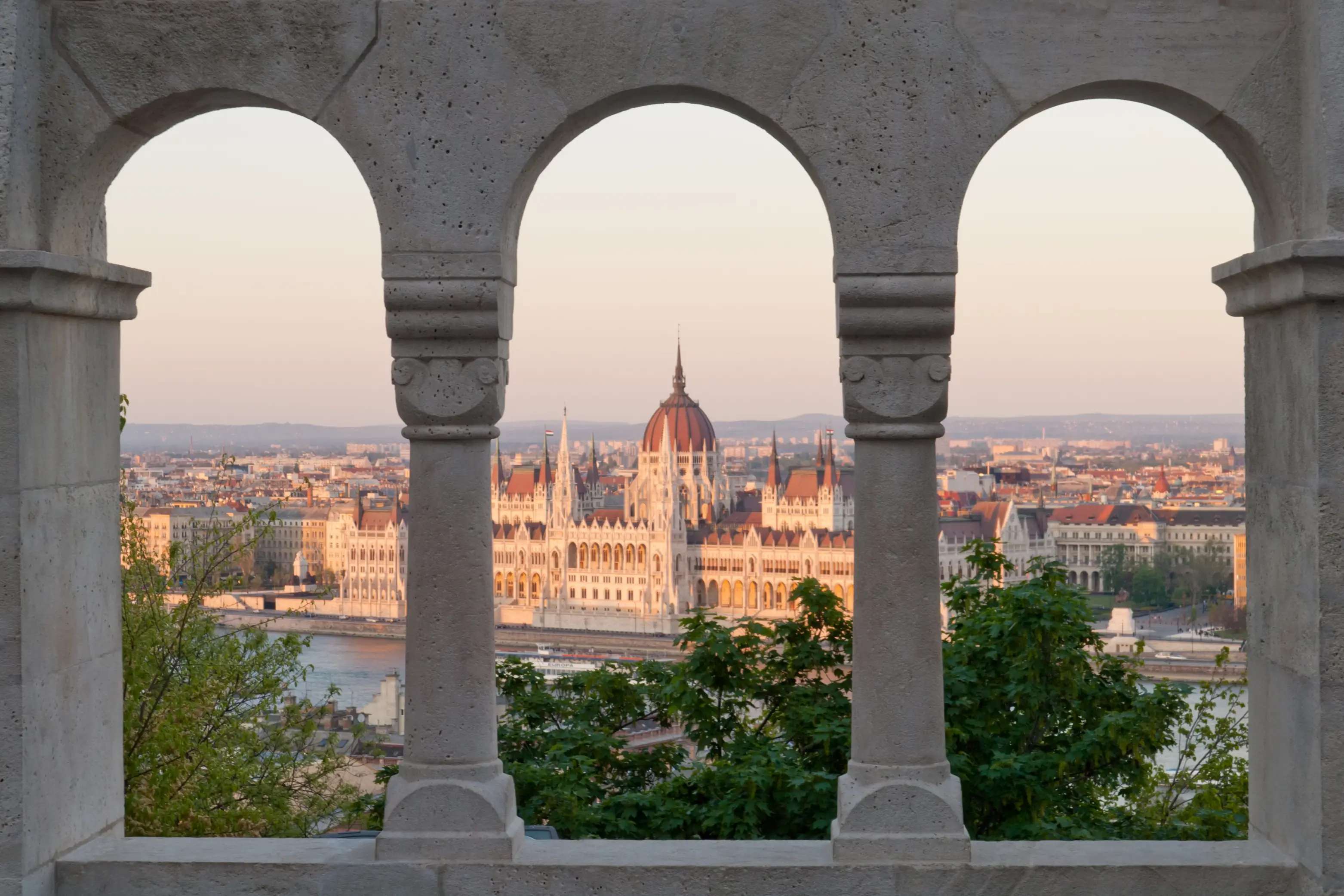
Budapest
Situated at the heart of Europe, Budapest is the capital of Hungary, appropriately named 'The Pearl of the Danube,' for its fixating and almost haunting beauty. Formerly two separate cities, Buda and Pest were forged into one by time, occupation, and the eight bridges that anchor them together today. From the Romans to the Communists, each occupier left its flavor profile in Budapest, evident in the famous spicy Hungarian stew known as 'goulash.' Budapest is a melting pot of history, culture, and taste, from the magnificent Baroque and neo-Gothic architecture to the Turkish thermal baths. After a long day of sightseeing, treat yourself to a glass of Tokaj, what King Louis XIV of France referred to as the "Wine of Kings, King of Wines". Budapest has a flavor to satisfy any taste.

Learn About Budapest
Build Budapest Trip
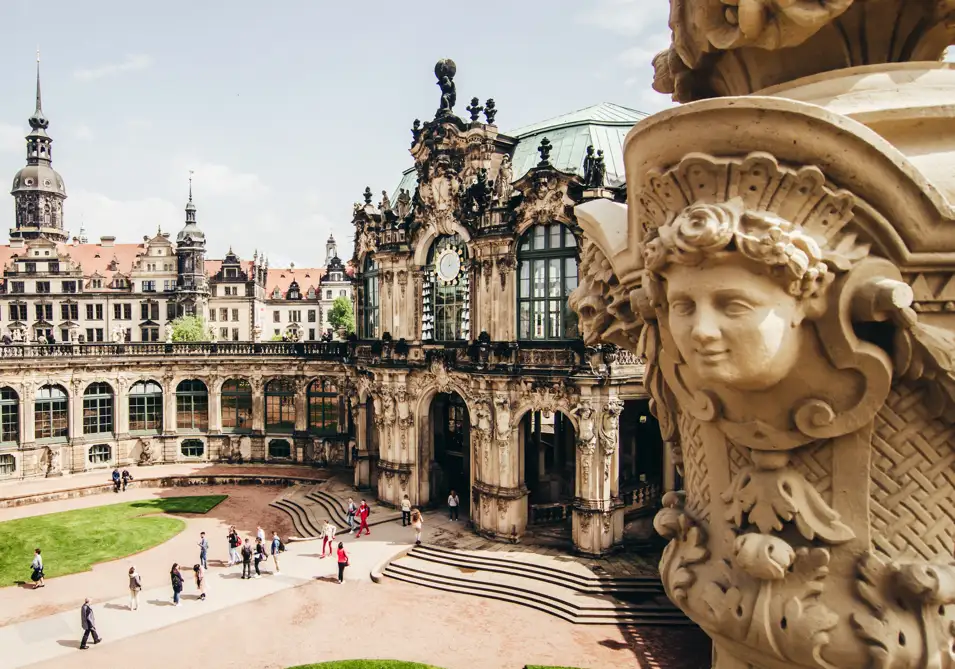
Dresden
Nearly every wall and rooftop in Dresden seems to be finished with a flourish. Defined by its ornamental baroque architecture, a power statement of Saxon royalty, Dresden is made all the more miraculous considering the city was leveled by firebombing in WWII. After the war, the city was reconstructed, brick by painstaking brick. Even under East German-Soviet rule, which usually eschewed frivolous design, buildings like the Semper Opera House were pieced back to their former glory. Restoration of the majestic Zwinger Palace and bell domed Church of Our Lady slowly followed, with the Frauenkirche only fully repaired in 2005. Arguably there is no other city in Europe that cherishes its hard-won architecture as much as Dresden. Although it is a compact city, so many of its buildings will stop you in your tracks that architecture fans will easily lose a whole day in the Old Town area. Especially during the winter months, Dresden sparkles with a joyous, uplifting ambiance. The city is recognized as having the best-ever Christmas market in all of Europe. Between the twinkling lights, the scent of hot wine and gingerbread, and the towering Christmas tree, it’s worth going out of your way to see Dresden at this time of year.

Learn About Dresden
Build Dresden Trip
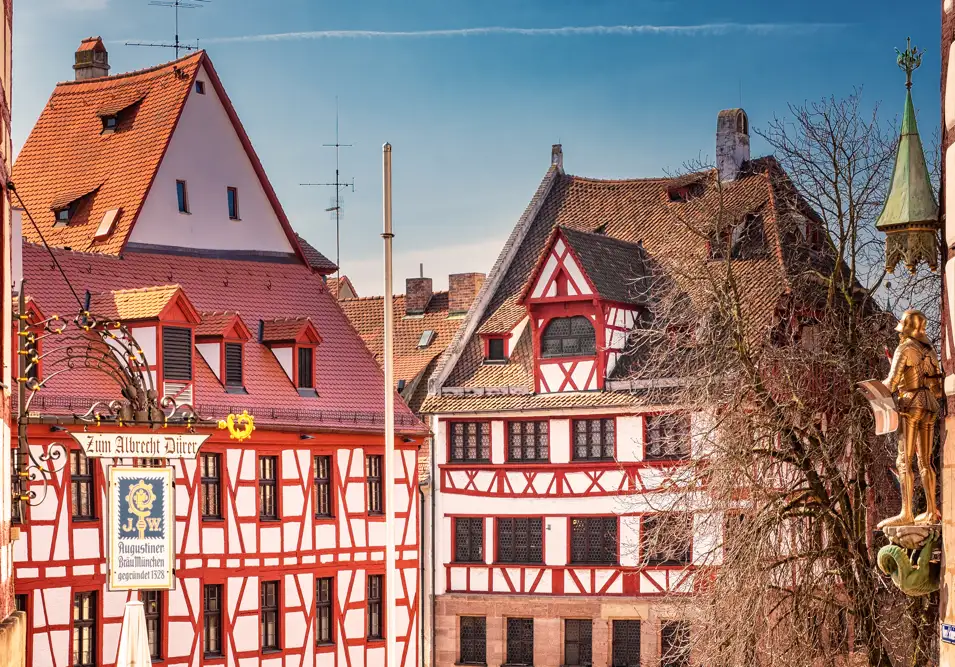
Nuremberg
One of the most authentic, storied German destinations, Nuremberg's picturesque old town, glorious castle, and buzzing Christmas Market makes this city a time-true classic. The ideal gateway to old Bavaria, Nuremberg offers a primer in German history before you embark on the lovely journey through old Bavaria, known as the Romantic Road. Considered the capital of the Holy Roman Empire in the middle ages, Nuremberg would have felt like the center of the world as a procession of kings and emperors passed through its magnificent gates. When the German Renaissance came, Nuremberg was at its heart. Albrecht Dürer, the great German master artist, was born here, and Martin Luther called Nuremberg Germany's 'eyes and ears'. Skip forward a few centuries, and the city took a dark turn, as Nuremberg became a gathering point for the German National Socialists. Slightly outside of town, you can still find the Nazi Party Rallying Grounds, a sobering reminder of the not so distant past. If it all gets too heavy, you can end the day with a glass of rotbier (red beer) and mull it over. Nuremberg is a must-see for anyone who wants to delve into Germany's past.

Learn About Nuremberg
Build Nuremberg Trip
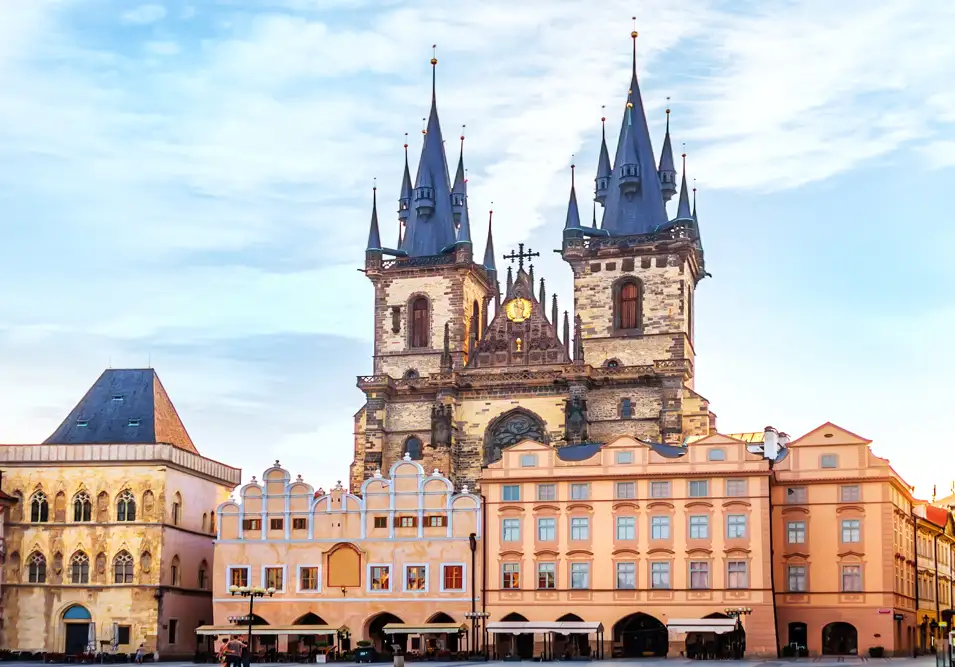
Prague
The city of Prague is indisputably the gem of Central Europe. Full of history, culture, and classic Czech pubs around every corner, Prague is teeming with nooks and crannies just waiting to be discovered. The narrow cobblestone streets and warm red rooftops give the city a homey feel, while the well-preserved medieval architecture transports you back in time. Walking across the Charles Bridge with the view of the Prague Castle will make you feel like you’re living in a fairytale, and you might as well be. As an up-and-coming destination, Prague is a perfect mix of classic and modern. New trendy cafes and bistros are always popping up, and you can always find a group of lively locals chowing down on goulash and quaffing pivo (the best beer in Europe!) at traditional Czech restaurants across the city. The clash of modernity and tradition, preservation and innovation, gives this city a mysterious air that you won’t soon forget.

Learn About Prague
Build Prague Trip
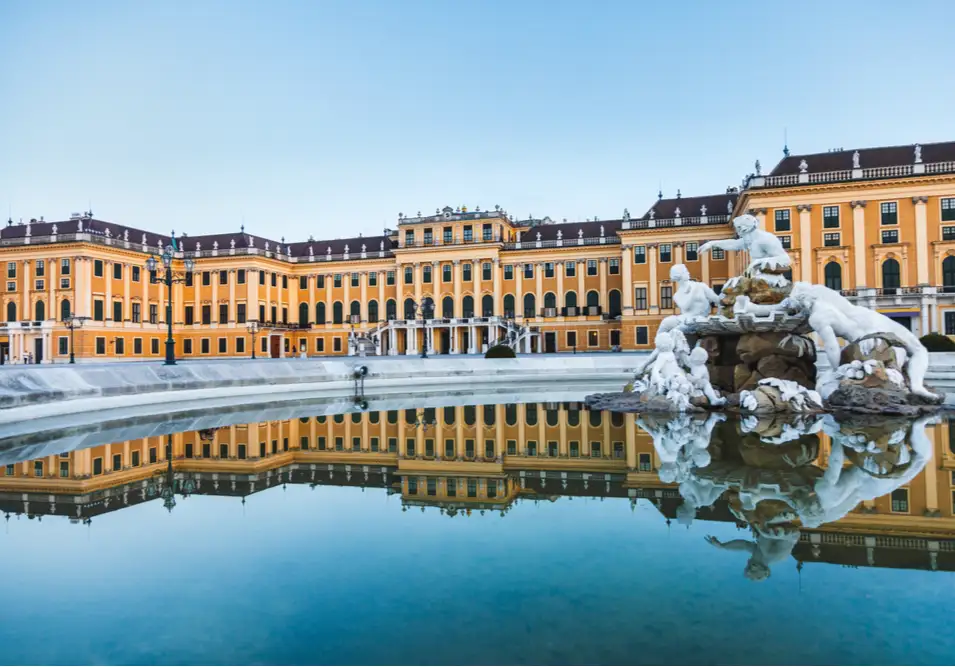
Vienna
Artistic and musical, historical and elegant, Vienna is the definition of class. The seat of the Habsburg monarchy for over six centuries, it's no wonder this city is still fit for royalty. Baroque buildings and imperial palaces dominate the cityscape, while locals stride gracefully through the streets, likely on their way to a classical music concert or art exhibition. Visitors from all over the world flock to Schonbrunn Palace, historical museums, and local eateries for authentic Viennese schnitzel. Vienna is also home to world-class wining and dining. Famous dishes include Wiener schnitzel, Tafelspitz (prime boiled beef), and apfelstrudel (apple strudel), all of which pair well with a glass of fine Austrian wine. No matter how long you spend in Vienna, you'll leave with a new appreciation for the finer things in life.

Learn About Vienna
Build Vienna Trip
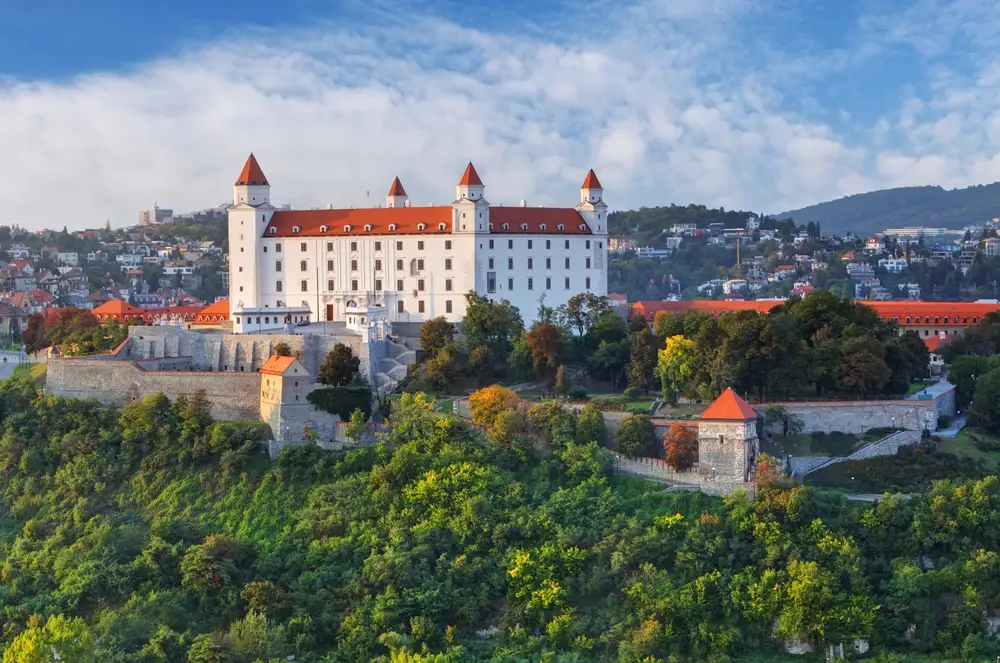
Bratislava
Bratislava is one of the most up-and-coming cities in central Europe. After years in the shadows of the Soviet bloc, and often drowned out by Prague, Bratislava has finally broken out. The Bratislavan region is now one of the richest per capita in the EU. This economic upswing has infused Bratislava with a newfound zeal. Trendy cafes and cool shopping centers are popping up everywhere, and the city’s already happening nightlife scene is only set to get better. Still less crowded than its central European neighbors Prague, Vienna, and Budapest, but just as intriguing, there’s really never been a better time for a visit to Bratislava. Ruled over by the Hungarians, Austrians, and most recently the Soviets, Bratislava is a city of strange contrasts. As soon as you arrive in Bratislava, you’ll see the pastel-hued churches, baroque houses, and the cobbled Old Town Square brush shoulders with modern brutalist buildings, retrofuturistic towers, and the clunky communist built UFO bridge. The city’s oldest building, its castle, is set atop the western edge of the Little Carpathian Hills like a trophy, the city’s hard-won main icon. For the first time in nearly a millennium, Bratislava has now seized control of its own destiny, and it shows.

Learn About Bratislava
Build Bratislava Trip

Budapest
Situated at the heart of Europe, Budapest is the capital of Hungary, appropriately named 'The Pearl of the Danube,' for its fixating and almost haunting beauty. Formerly two separate cities, Buda and Pest were forged into one by time, occupation, and the eight bridges that anchor them together today. From the Romans to the Communists, each occupier left its flavor profile in Budapest, evident in the famous spicy Hungarian stew known as 'goulash.' Budapest is a melting pot of history, culture, and taste, from the magnificent Baroque and neo-Gothic architecture to the Turkish thermal baths. After a long day of sightseeing, treat yourself to a glass of Tokaj, what King Louis XIV of France referred to as the "Wine of Kings, King of Wines". Budapest has a flavor to satisfy any taste.

Learn About Budapest
Build Budapest Trip

Dresden
Nearly every wall and rooftop in Dresden seems to be finished with a flourish. Defined by its ornamental baroque architecture, a power statement of Saxon royalty, Dresden is made all the more miraculous considering the city was leveled by firebombing in WWII. After the war, the city was reconstructed, brick by painstaking brick. Even under East German-Soviet rule, which usually eschewed frivolous design, buildings like the Semper Opera House were pieced back to their former glory. Restoration of the majestic Zwinger Palace and bell domed Church of Our Lady slowly followed, with the Frauenkirche only fully repaired in 2005. Arguably there is no other city in Europe that cherishes its hard-won architecture as much as Dresden. Although it is a compact city, so many of its buildings will stop you in your tracks that architecture fans will easily lose a whole day in the Old Town area. Especially during the winter months, Dresden sparkles with a joyous, uplifting ambiance. The city is recognized as having the best-ever Christmas market in all of Europe. Between the twinkling lights, the scent of hot wine and gingerbread, and the towering Christmas tree, it’s worth going out of your way to see Dresden at this time of year.

Learn About Dresden
Build Dresden Trip

Nuremberg
One of the most authentic, storied German destinations, Nuremberg's picturesque old town, glorious castle, and buzzing Christmas Market makes this city a time-true classic. The ideal gateway to old Bavaria, Nuremberg offers a primer in German history before you embark on the lovely journey through old Bavaria, known as the Romantic Road. Considered the capital of the Holy Roman Empire in the middle ages, Nuremberg would have felt like the center of the world as a procession of kings and emperors passed through its magnificent gates. When the German Renaissance came, Nuremberg was at its heart. Albrecht Dürer, the great German master artist, was born here, and Martin Luther called Nuremberg Germany's 'eyes and ears'. Skip forward a few centuries, and the city took a dark turn, as Nuremberg became a gathering point for the German National Socialists. Slightly outside of town, you can still find the Nazi Party Rallying Grounds, a sobering reminder of the not so distant past. If it all gets too heavy, you can end the day with a glass of rotbier (red beer) and mull it over. Nuremberg is a must-see for anyone who wants to delve into Germany's past.

Learn About Nuremberg
Build Nuremberg Trip

Prague
The city of Prague is indisputably the gem of Central Europe. Full of history, culture, and classic Czech pubs around every corner, Prague is teeming with nooks and crannies just waiting to be discovered. The narrow cobblestone streets and warm red rooftops give the city a homey feel, while the well-preserved medieval architecture transports you back in time. Walking across the Charles Bridge with the view of the Prague Castle will make you feel like you’re living in a fairytale, and you might as well be. As an up-and-coming destination, Prague is a perfect mix of classic and modern. New trendy cafes and bistros are always popping up, and you can always find a group of lively locals chowing down on goulash and quaffing pivo (the best beer in Europe!) at traditional Czech restaurants across the city. The clash of modernity and tradition, preservation and innovation, gives this city a mysterious air that you won’t soon forget.

Learn About Prague
Build Prague Trip

Vienna
Artistic and musical, historical and elegant, Vienna is the definition of class. The seat of the Habsburg monarchy for over six centuries, it's no wonder this city is still fit for royalty. Baroque buildings and imperial palaces dominate the cityscape, while locals stride gracefully through the streets, likely on their way to a classical music concert or art exhibition. Visitors from all over the world flock to Schonbrunn Palace, historical museums, and local eateries for authentic Viennese schnitzel. Vienna is also home to world-class wining and dining. Famous dishes include Wiener schnitzel, Tafelspitz (prime boiled beef), and apfelstrudel (apple strudel), all of which pair well with a glass of fine Austrian wine. No matter how long you spend in Vienna, you'll leave with a new appreciation for the finer things in life.

Learn About Vienna
Build Vienna Trip

Bratislava
Bratislava is one of the most up-and-coming cities in central Europe. After years in the shadows of the Soviet bloc, and often drowned out by Prague, Bratislava has finally broken out. The Bratislavan region is now one of the richest per capita in the EU. This economic upswing has infused Bratislava with a newfound zeal. Trendy cafes and cool shopping centers are popping up everywhere, and the city’s already happening nightlife scene is only set to get better. Still less crowded than its central European neighbors Prague, Vienna, and Budapest, but just as intriguing, there’s really never been a better time for a visit to Bratislava. Ruled over by the Hungarians, Austrians, and most recently the Soviets, Bratislava is a city of strange contrasts. As soon as you arrive in Bratislava, you’ll see the pastel-hued churches, baroque houses, and the cobbled Old Town Square brush shoulders with modern brutalist buildings, retrofuturistic towers, and the clunky communist built UFO bridge. The city’s oldest building, its castle, is set atop the western edge of the Little Carpathian Hills like a trophy, the city’s hard-won main icon. For the first time in nearly a millennium, Bratislava has now seized control of its own destiny, and it shows.

Learn About Bratislava
Build Bratislava Trip
prev
next


 Map of Your Itinerary Route
Map of Your Itinerary Route
Zoom In to the cities to see your itinerary in more detail


 4.8
4.8 